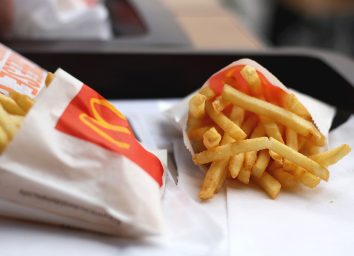How 40 Famous Dishes Got Their Famous Names
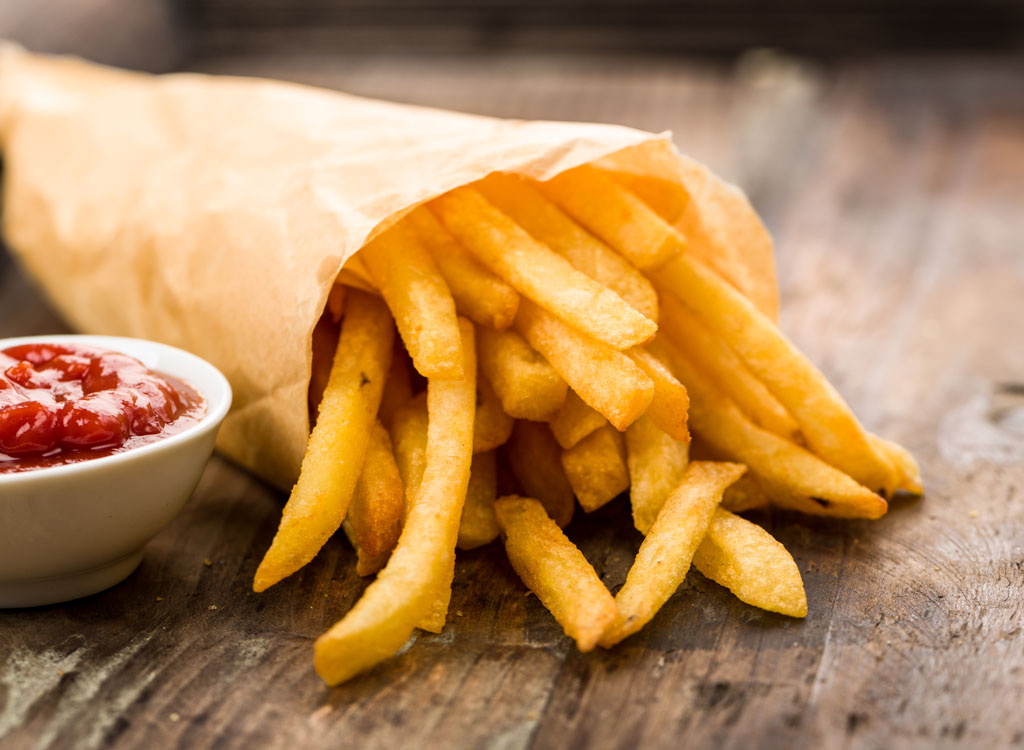
Did you know that French fries aren't French and German chocolate cake isn't German? Did you ever wonder how hamburgers got their name when they have no ham in them? Or maybe you've stopped to think, "Who was Joe, and was he really sloppy enough to have a sandwich named after him?"
As it turns out, there are all sorts of surprising stories behind the names of your favorite foods. We've rounded up the most incredible ones, with tales that span centuries, cross continents, and take us back to the kitchens that first created some of the most iconic dishes.
Read on to get acquainted with your favorite foods and drinks in a whole new way and find out how 40 famous dishes got their famous names.
And for more, check out these 15 Classic American Desserts That Deserve a Comeback.
Beef Stroganoff
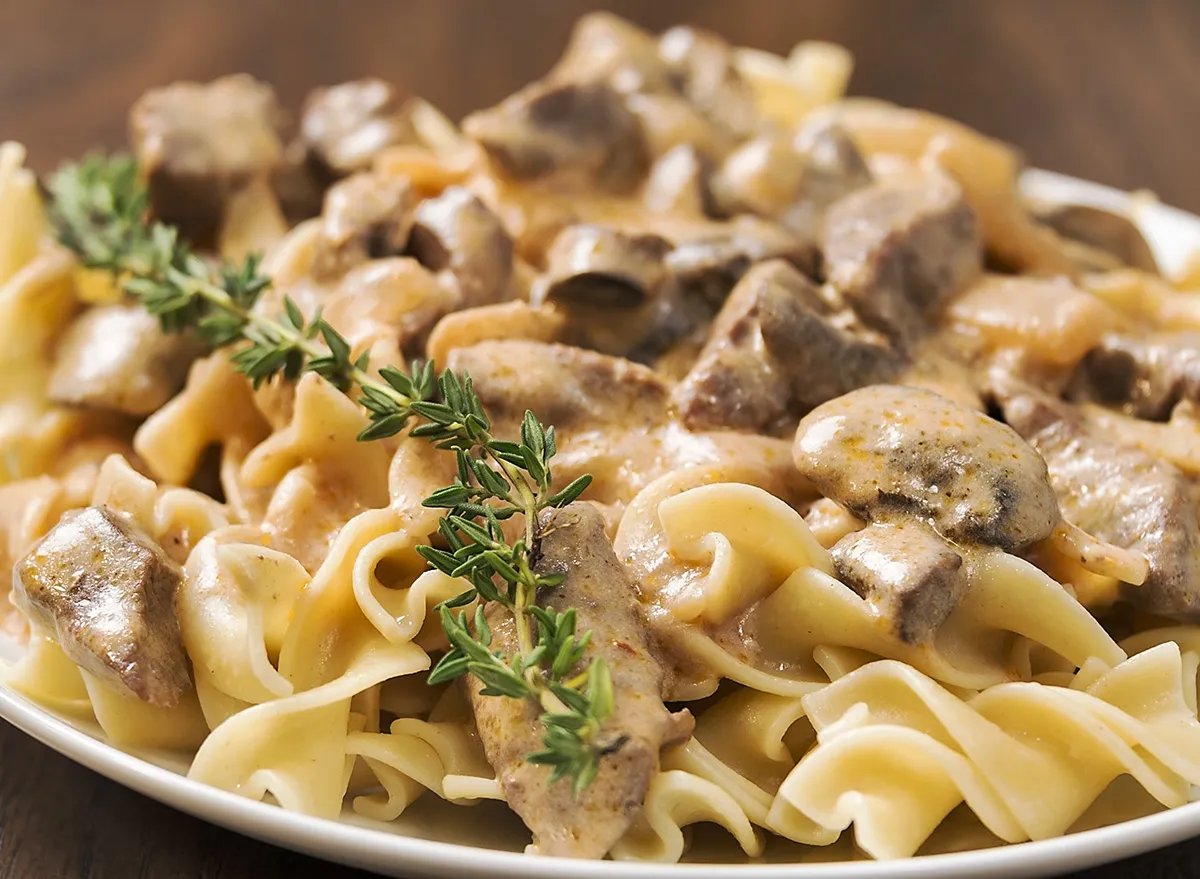
Beef Stroganoff may have hit peak popularity in America in the 1950s and 1960s, but it's been around far longer than that. The recipe originated in 17th century Russia and gets its name from Count Pavel Alexandrovich Stroganov, a diplomat from the Russian Stroganov family. The count was born in Paris so he would hire French cooks, but he would ask them to add some Russian flair to their dishes as well.
According to the cookbook A Taste of Russia, "Count Stroganov's chef simply added some very Russian sour cream to a basic French mustard sauce." It was poured over some beef and became a household hit. Thus, the legendary dish was born.
And for more, sign up for our newsletter to get daily recipes and food news in your inbox!
Reuben
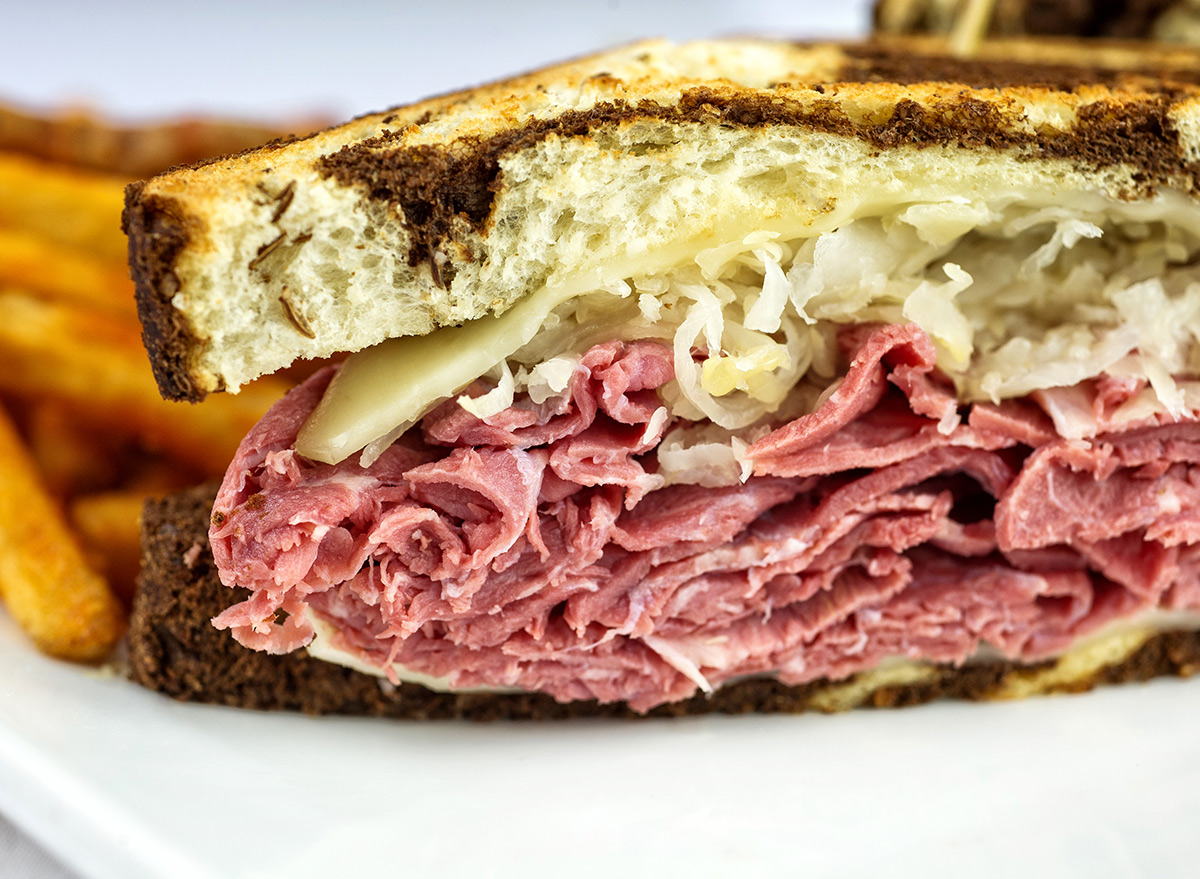
Though there's some debate about the Reuben's origins, many believe the sandwich emerged in the 1920s at the Blackstone Hotel in Omaha, Nebraska, where Bernard Schimmel was the chef. Schimmel's granddaughter told Saveur that some poker players at the hotel requested snacks during their game, so Schimmel concocted the corned beef and sauerkraut sandwich for one of the players, Reuben Kulakofsky.
The dish took off and began appearing on menus across the state. Then, in 1956, a waitress entered the sandwich into the National Restaurant Association's National Sandwich Idea contest, where it won the grand prize and was catapulted to national fame.
Sandwich

Now you know where the "Reuben" comes from, but what about the concept of a sandwich itself? Well, according to PBS, the sandwich is named after 18th-century aristocrat John Montagu, the fourth Earl of Sandwich, who enjoyed eating sliced meats between two pieces of bread.
And his legacy lives on. Montagu's great-great-great-great-great-great grandson, Orlando Montagu, founded a chain called Earl of Sandwich. The restaurants pay homage to the Earl's first, most famous sandwich called the "Original 1762," which is hot roast beef, sharp cheddar, and creamy horseradish sauce served on warm bread.
Waldorf Salad
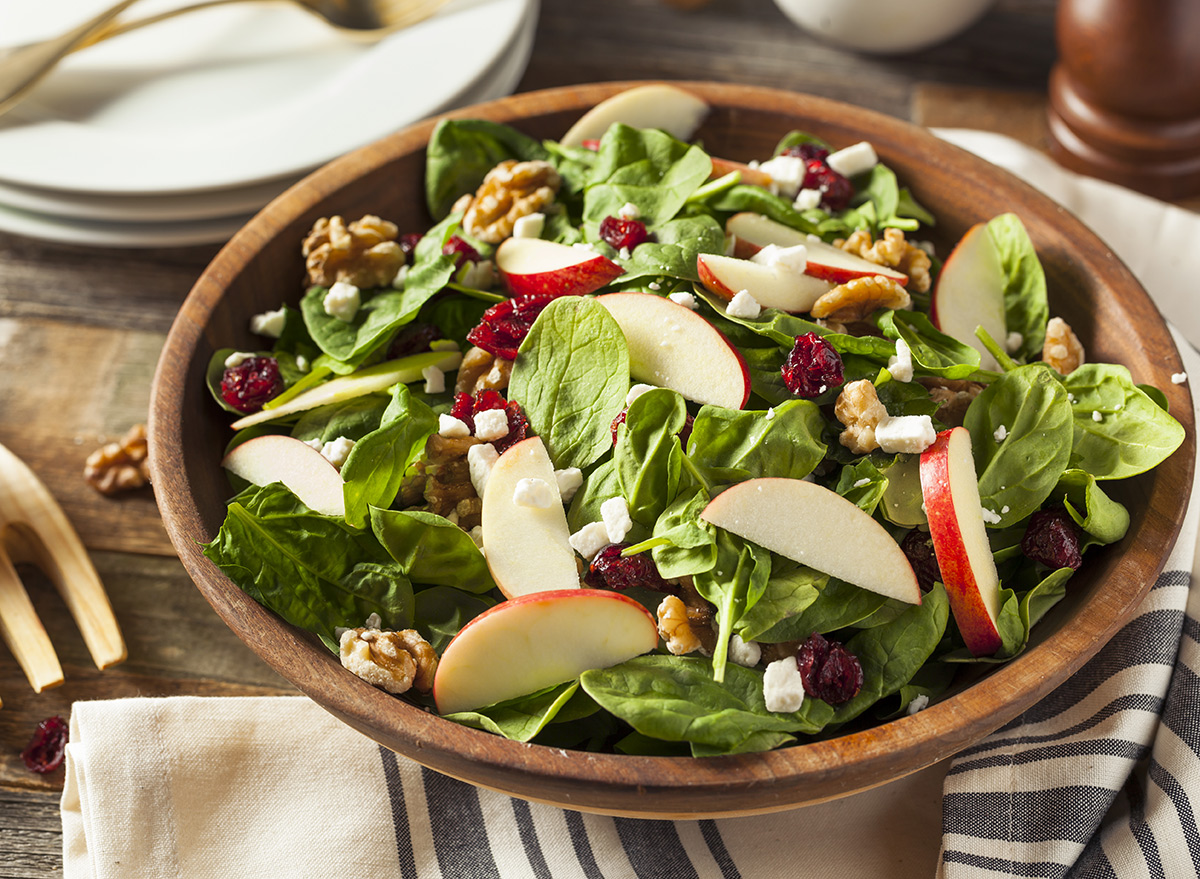
The Waldorf salad, which features apples, celery, grapes, and chopped walnuts over a bed of greens, is named after the establishment that birthed it: the Waldorf-Astoria Hotel in New York City. According to The New York Times, the dish was dreamed up by maitre-d'hotel Oscar Tschirky. When the hotel served it at a charity ball for Saint Mary's Hospital for Children in 1893, it was met with rave reviews. Today, it's still served at the Waldorf and on menus all over the country.
French Fries
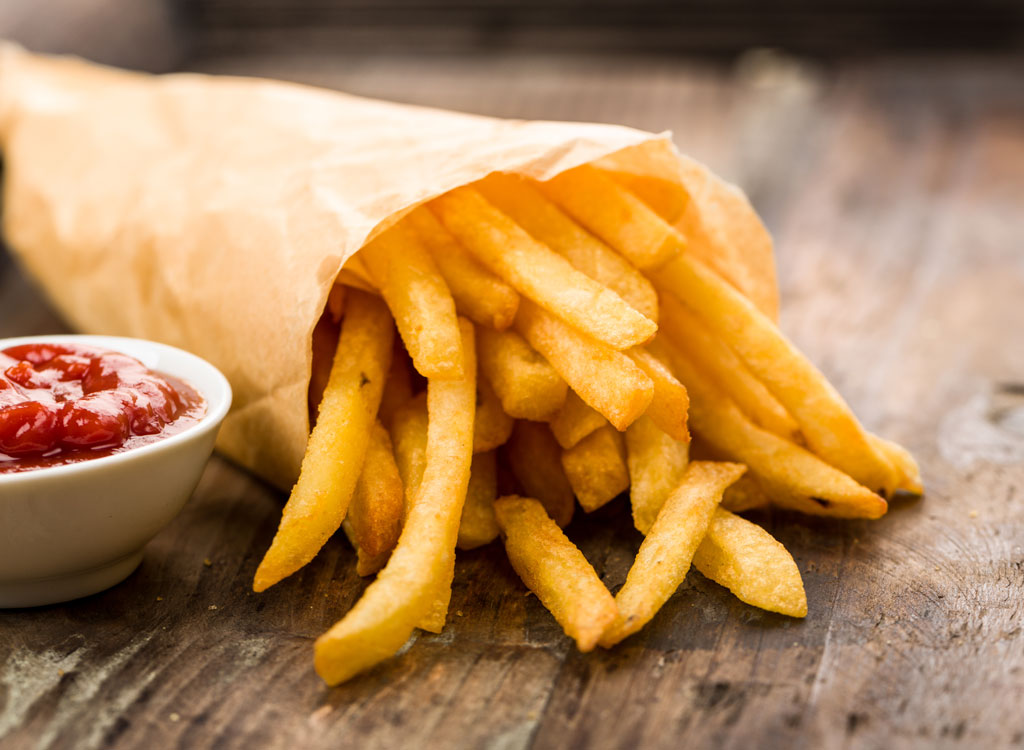
Though some claim French fries have French origins, National Geographic says the first French fries came from Belgium, where fishermen near the River Meuse began frying potatoes during the long winter months when there wasn't enough fish to fry.
American soldiers first learned about the dish during World War I by way of French-speaking Belgian soldiers, which is why Americans dubbed them "French." Today, you can visit the Frietmuseum in Bruges, Belgium, devoted solely to the history of the now-ubiquitous side dish.
Caesar Salad

Though most assume the Caesar salad has a connection to Julius Caesar, the popular salad was actually created in Tijuana, Mexico, in 1924 by Italian-American restaurateur Caesar Cardini.
According to Food and Wine, Cardini's daughter Rosa said her father came up to the dish out of necessity when his restaurant was low on supplies. Working with what he had, Cardini created a salad of romaine lettuce, eggs, olive oil, croutons, and Worcestershire sauce. The rest, as they say, is history.
Chicken à la King
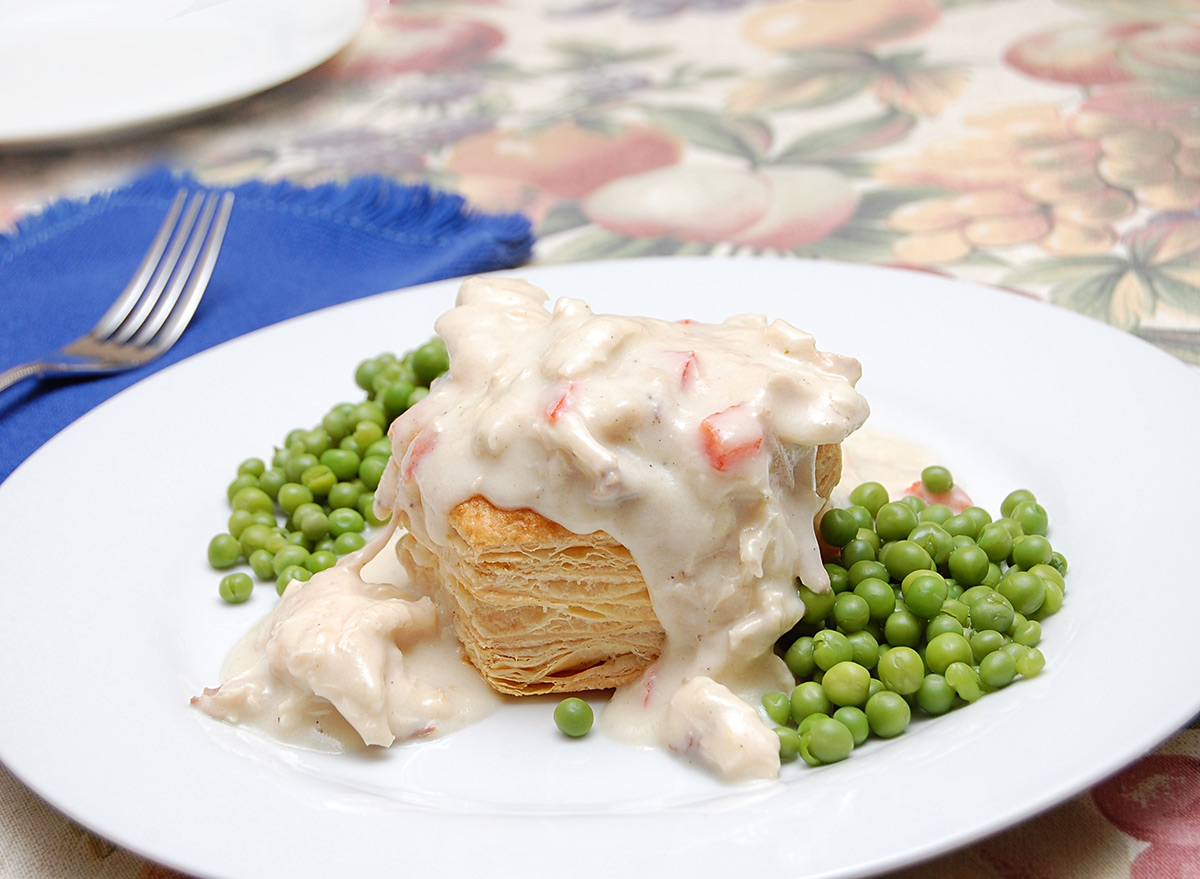
While it's unclear who exactly is responsible for Chicken à la King, according to Politico, the most likely story indicates that the meal was originally made by the chef at New York's Brighton Beach Hotel, owned by E. Clark King II.
In the 1900s, the chef first served the concoction—consisting of chicken, peppers, mushrooms, and a bechamel sauce over noodles—to his boss, who asked for seconds. The next day, the item appeared on the hotel's menu for "$1.25 a portion" under the hotelier's name.
Lobster Newburg
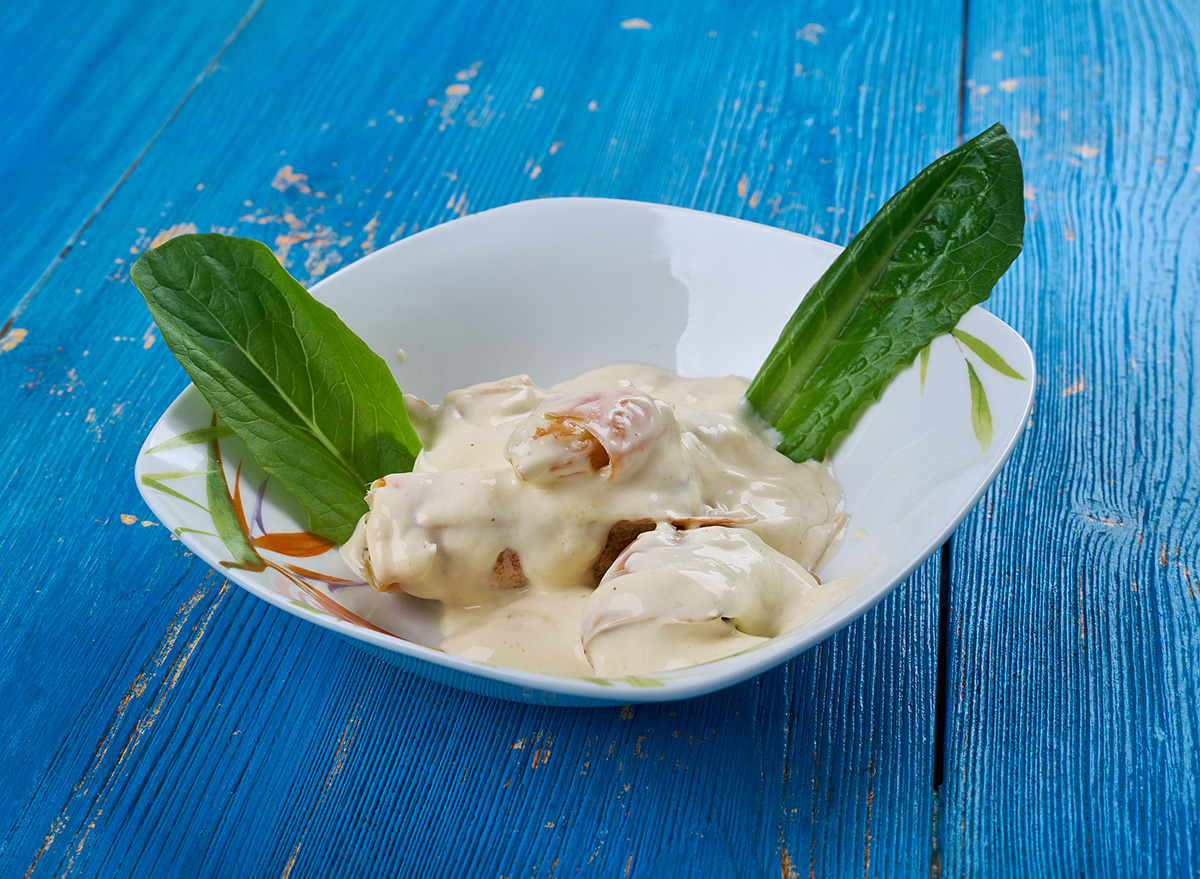
Ben Wenberg, a successful sea captain in the West Indes fruit trade, is rumored to be responsible for this creamy, decadent seafood dish. In 1876, Wenberg shared his recipe with Charles Delmonico of Delmonico's restaurant in New York City, and it subsequently appeared on the menu as "Lobster a la Wenburg."
However, according to What's Cooking America, the two eventually had a falling out, and Delmonico banished Wenberg from his establishment and struck the item from the menu. However, when customers started clamoring for it, Delmonico decided to reinstate the dish, but with a new name: the anagram "Newburg."
Salisbury Steak
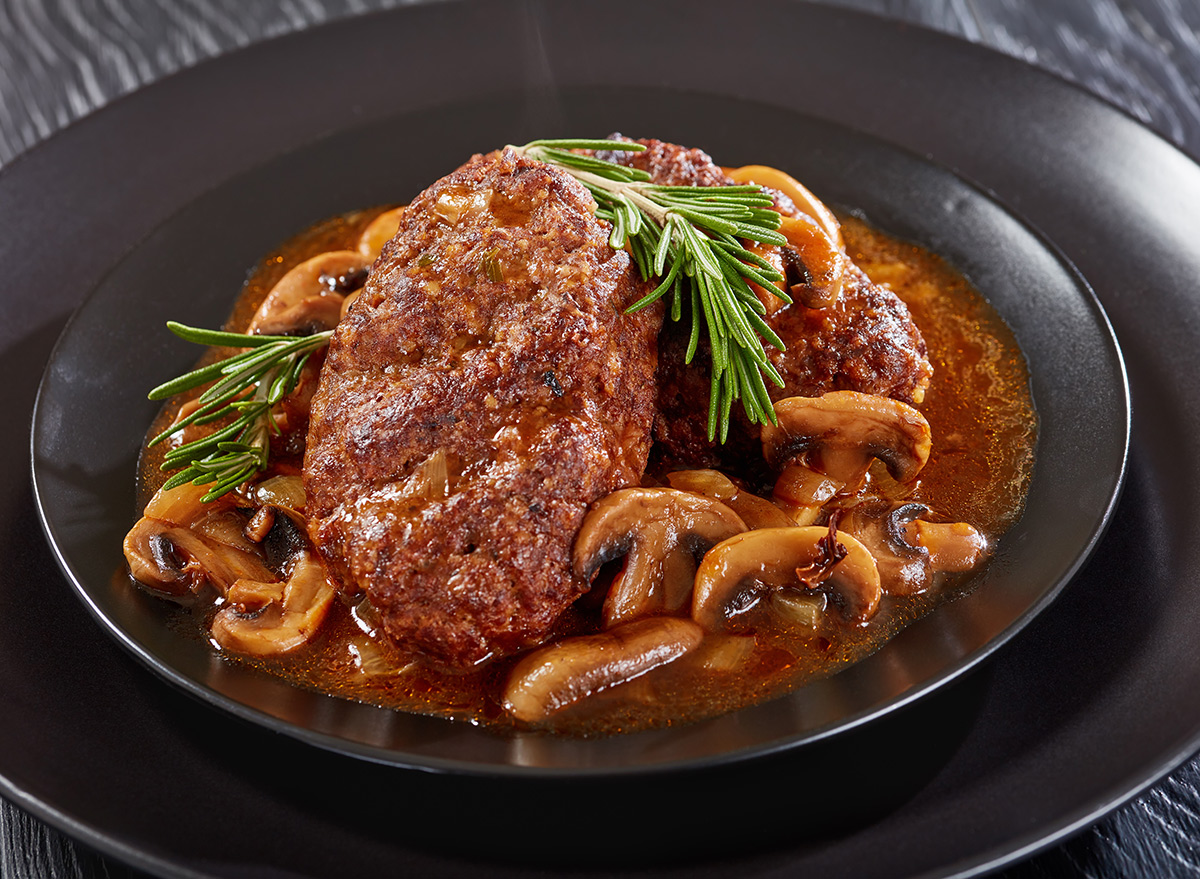
The Salisbury steak got its name from Dr. James Henry Salisbury, a 19th-century physician who first served it to Civil War soldiers during a study. Salisbury used the dish—which is basically ground beef shaped like a steak with potatoes and gravy—to treat chronic diarrhea among Union soldiers.
Three decades after the war's end, Salisbury published a book in which he claimed that "lean beef, minced to break down any connective tissue and fully cooked, was the best and most easily digested food," according to Smithsonian Magazine. Salisbury initially referred to the dish as "muscle pulp of beef," but as it grew in popularity, its name thankfully evolved as well.
Baked Alaska

This dessert dish consists of cake and ice cream enveloped in meringue, then brûléed on the outside. The unlikely baking method was conceived by an 18th-century scientist named Sir Benjamin Thompson, according to NPR.
Thompson was the first to realize that the air bubbles in the meringue protected and preserved the temperature of the ice cream inside. His method for the "Omelette Norwegge," the treat's name at the time, was later adopted by Charles Ranhofer, a Parisian chef working at Delmonico's in New York. Ranhofer had a penchant for making subtle cultural commentary with his food.
As the legend goes, after the purchase of Alaska from Russia in 1867, Ranhofer came up with a nickname for the dish: "Alaska, Florida," a play on the contrasting temperatures of the dessert. The name "Baked Alaska" stuck and evolved into the treat we know and love today.
Eggs Benedict

You're hardly alone if you thought Eggs Benedict was named after famed traitor Arnold Benedict or Pope Benedict XIII. According to Atlas Obscura, this brunch staple got its name from Lemuel Benedict, a wealthy playboy of the Gilded Age who ordered the components of the meal on one (presumably hungover) morning at the Waldorf-Astoria Hotel.
Benedict's original request included regular bacon instead of the Canadian bacon we've come to expect on today's menus. But the maître-d'hotel, Oscar Tschirky—the same man who came up with the Waldorf salad—tinkered with the recipe to create the dish as we know it.
Carpaccio
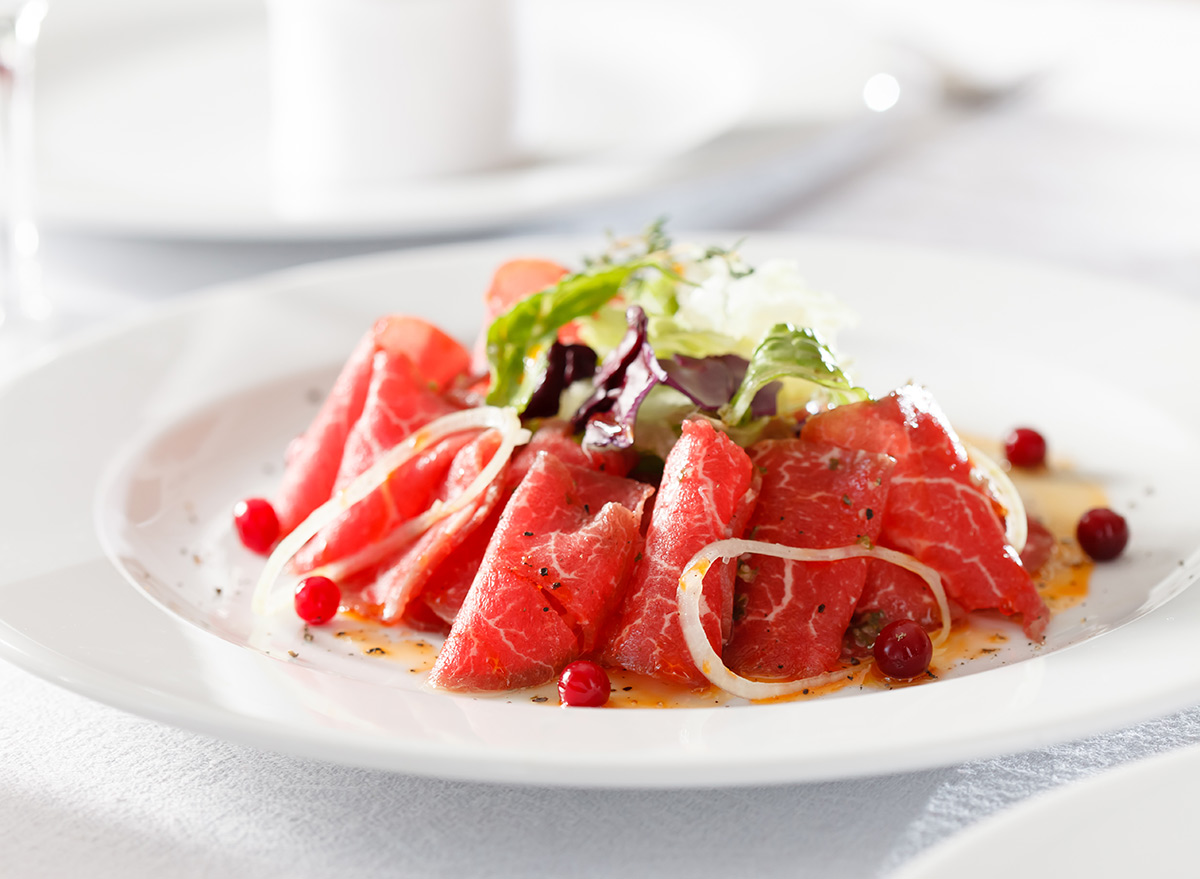
Nowadays, carpaccio can be made out of raw fish, vegetables, beef, and many other types of food. But the original and truest version is made of thinly sliced or pounded pieces of raw meat.
It was initially introduced to the world in the 1950s by Giuseppe Cipriani, the owner of Harry's Bar in Venice, Italy. But in a rare instance of the inventor not taking all the credit, Cipriani named this appetizer for its vibrant color. According to The New York Times, the word "carpaccio" references 16th century Venetian Renaissance painter Vittore Carpaccio, who was known for using bloody red hues in his work.
California Roll
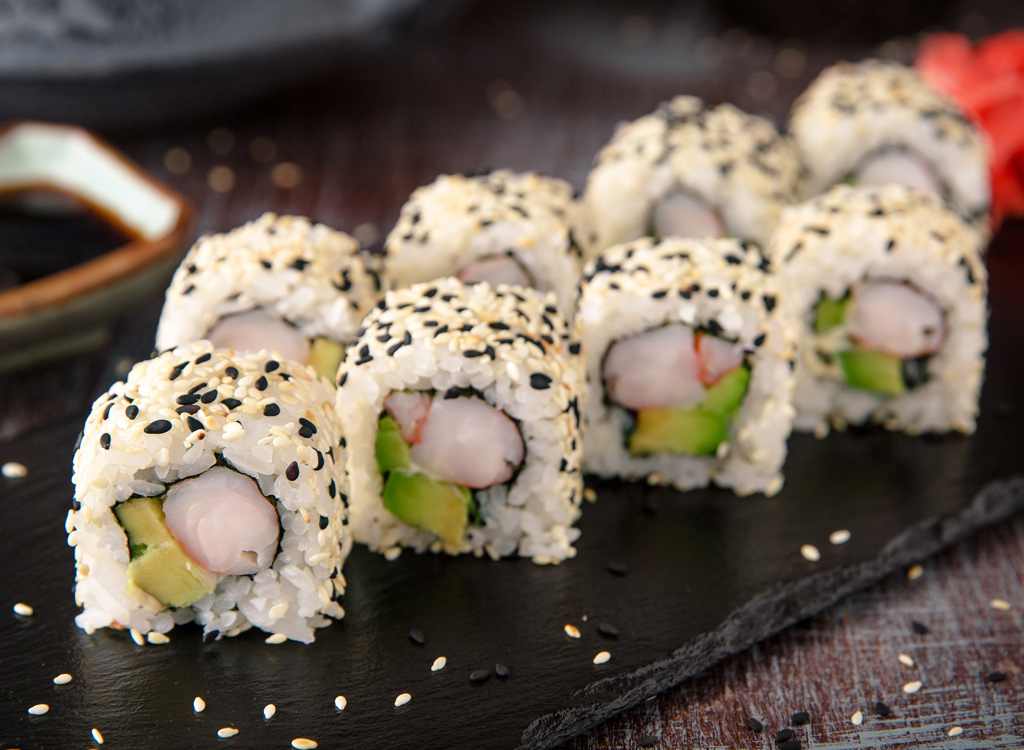
This is one of the least authentic, but most popular sushi rolls in America, but it's not even from the state of its name. The California roll—an inverted roll made of imitation crab, sliced cucumber, and avocado—was created by Vancouver-based, Japan-born sushi chef Hidekazu Tojo, who helped bring the popular cuisine to North America in the 1960s.
"When I came to Vancouver, most Western people did not eat raw fish," Tojo told The Globe and Mail. "Another thing Western people did not eat was seaweed, so I tried to hide it. I made the roll inside out. People loved it. A lot of people from out of town came to my restaurant—lots from Los Angeles—and they loved it. That's how it got called the California roll."
Peach Melba

Chef Auguste Escoffier of London's Savoy Hotel created Peach Melba—a dessert made of peaches and raspberry sauce with vanilla ice cream—and named it after Australian opera singer Nellie Melba.
According to PBS, the two became acquainted in the early 1890s while Melba was performing in London and staying at the Savoy. After seeing her perform in the Richard Wagner opera Lohengrin, which featured a boat shaped like a swan, Escoffier was inspired to create his now-iconic frosty peach dessert, which he served in a swan carved out of ice. A decade later, Escoffier went on to become head chef at the Ritz Carlton, where he perfected and popularized the recipe.
Fettuccine Alfredo
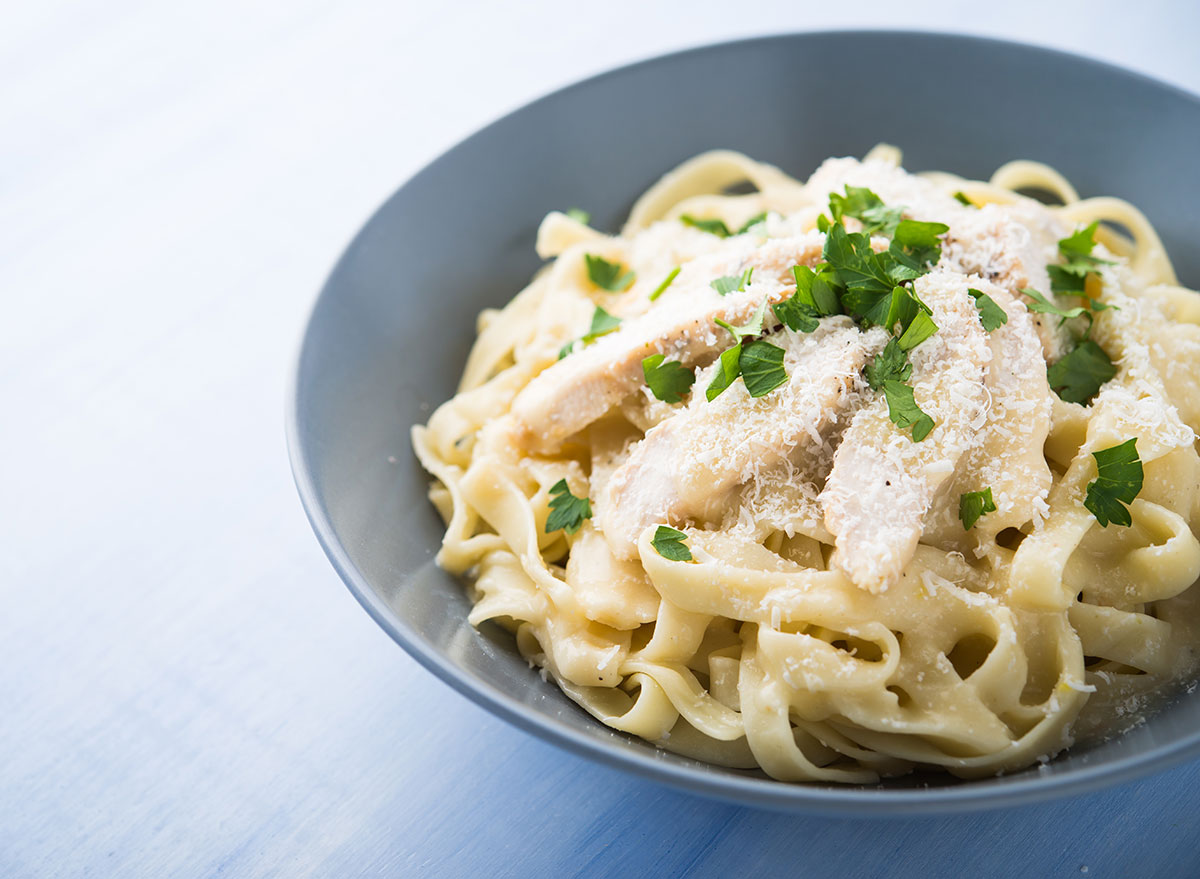
The dish we know as fettuccine Alfredo was almost "fettuccine Ines." According to Italy Magazine, Italian restaurateur Alfredo di Lelio first made the butter and Parmesan pasta dish in 1908 for his wife, Ines, when she struggled to regain her strength after giving birth.
Di Lelio later added the item to the menu at his restaurant in Rome, where two famous American silent film movie stars—Mary Pickford and Douglas Fairbanks—tried it and brought the recipe home with them. And though we've come to call it "fettuccine Alfredo" in the states, the dish is known as "fettuccine al burro" or "fettuccine burro e Parmigiano" in Italy. (Just in case it wasn't clear, yes, "burro" means butter.)
Bloody Mary
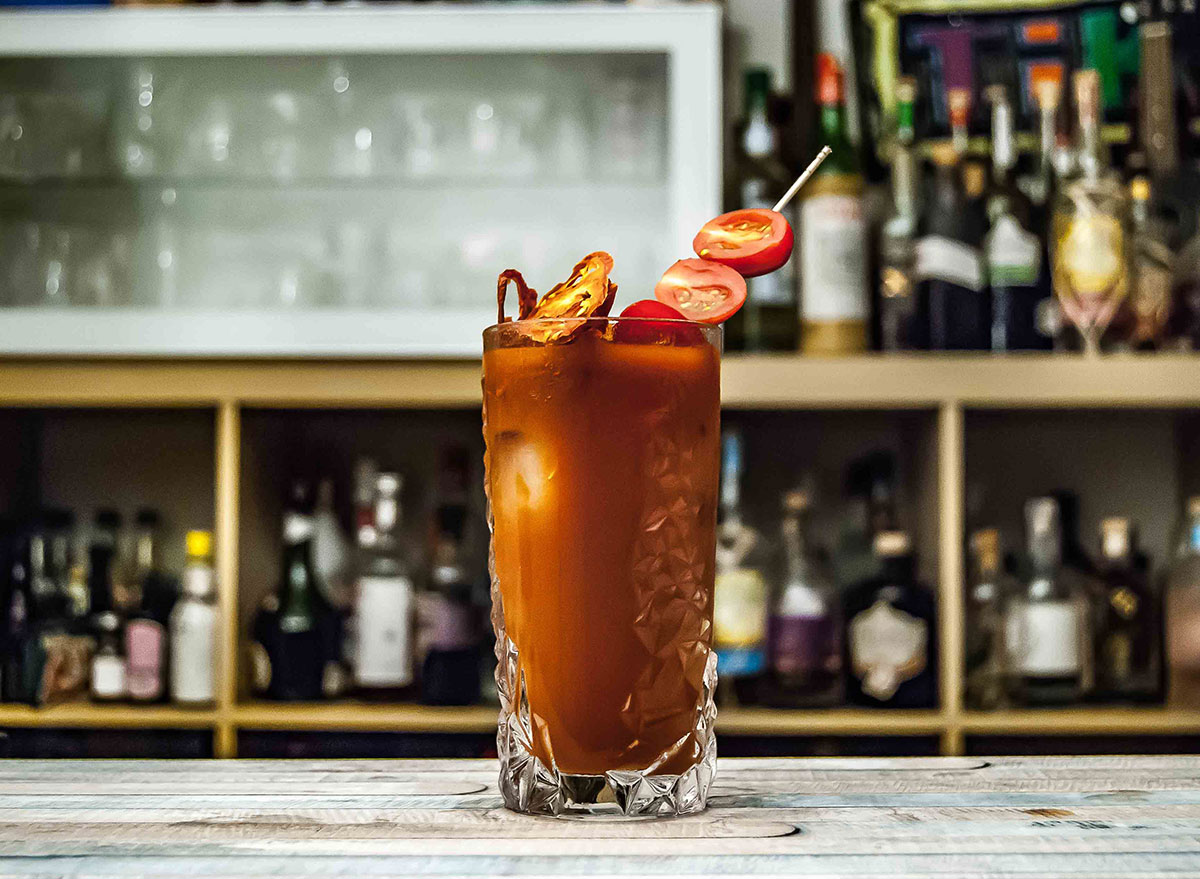
This one's a bit controversial, but who doesn't love a debate, especially over a brunch cocktail or two? Some say the name of the beloved Bloody Mary is a reference to the murderous Queen Mary I of England, and others insist that the name is in honor of a woman named Mary from the Bucket of Blood Club in Chicago. But no matter how the drink got its name, it's bartender Fernand Petiot, of Harry's New York Bar in Paris, who's credited with creating the beverage that changed brunch forever. He eventually brought it over to the states, where it almost became known as the Red Snapper, but that name just didn't stick as well as Bloody Mary.
Sloppy Joe
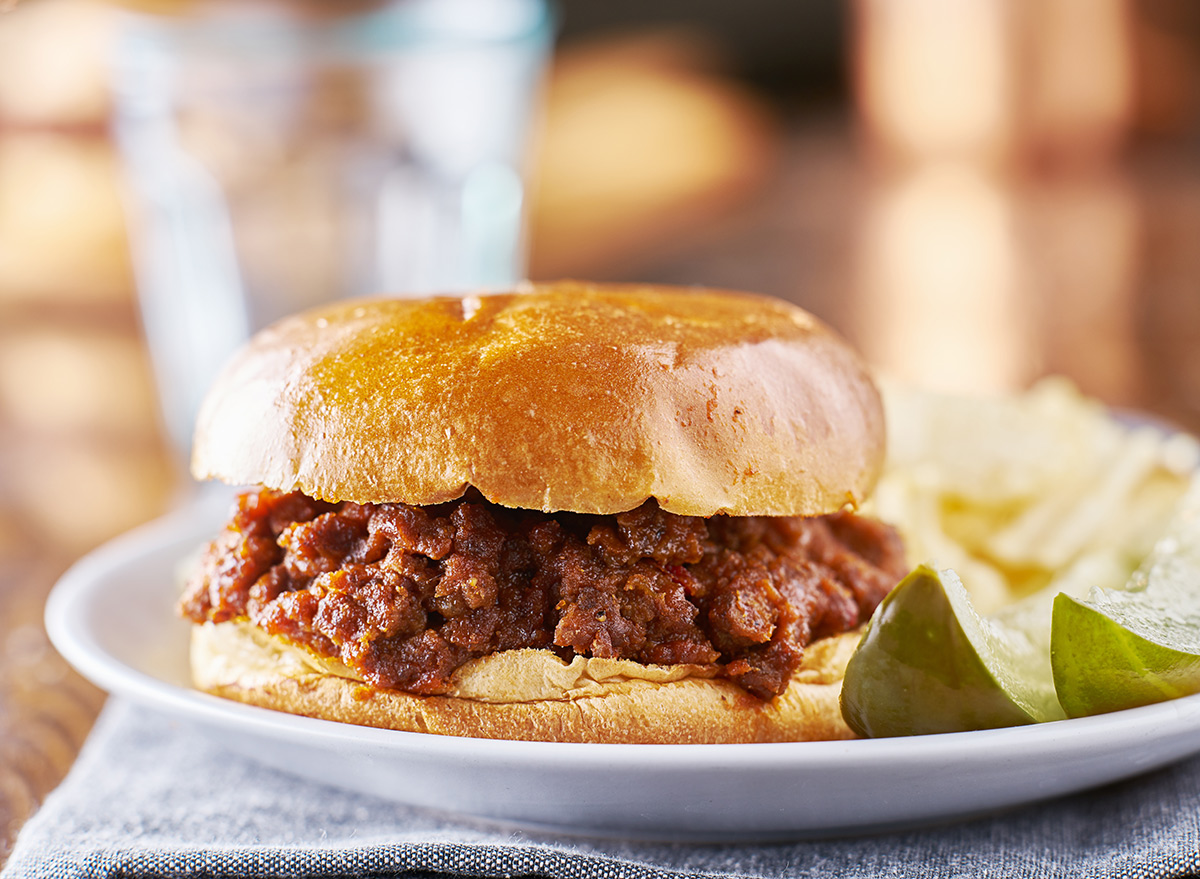
The Sloppy Joe also has multiple origin stories, with three different establishments claiming ownership for the recipe and name, according to Blue Apron.
First, a bar in Havana, Cuba, called Sloppy Joe's argues that their loose meat sandwiches were the first to break ground on the concept back in the 1920s. Ernest Hemingway frequented this establishment during the Prohibition Era and encouraged a Key West bar owner to change the name of his own spot to Sloppy Joe's Bar in reference to the original. Now, the Hemingway hot spot claims they were the ones who Americanized the sandwich.
And yet, a third (and widely accepted) claim comes out of Sioux City, Iowa's Ye Olde Tavern. Legend has it that a man named Dave Higgin created the sandwich there in 1924, but the connection to the infamous Joe, in this case, isn't quite clear.
Pound Cake

You might think that a pound cake gets its name from its dense weight, but that's not exactly right. The name actually references the fact that a pound cake, according to PopSugar, requires one pound of each key ingredient: butter, flour, eggs, and sugar. No wonder they're so delicious.
Kaiser Rolls
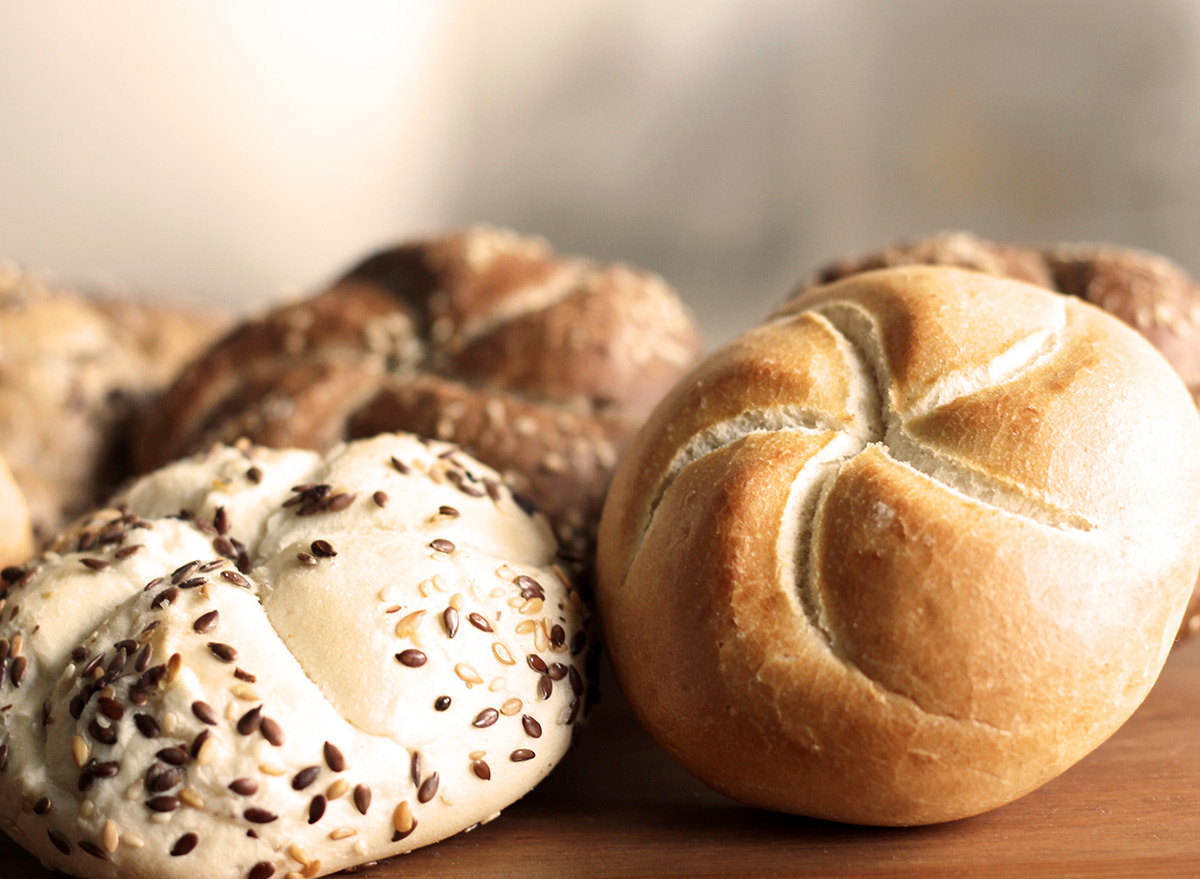
These unassuming white bread rolls hail from Vienna, Austria, where the word "kaiser" means "emperor." The roll's moniker is a nod to Emperor Franz Joseph I, according to Be the Hero Of Your Own Kitchen. He deregulated the price of bread in 19th century Austria at the insistence of the local bakers' guild. In return, the guild named the most popular bread after him.
Mississippi Mud Pie
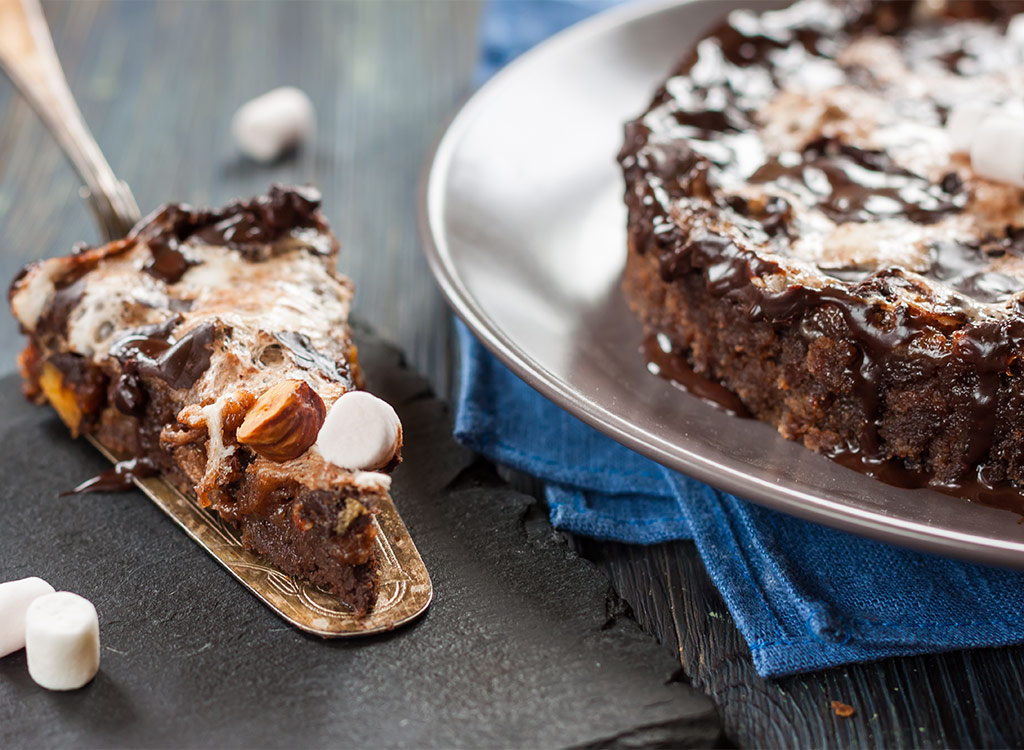
This rich, gooey chocolate dessert is named after its appearance and texture: It looks and feels like the muddy banks of the Mississippi River. According to the book Our Fifty States, the earliest confirmed mention of this legendary Southern delicacy came from Jenny Meyer, a waitress in Vicksburg, Mississippi. She remarked that the melting frozen pie, which had come from chef Percy Tolliver, reminded her of Mississippi mud after the great flood in 1927.
Kung Pao Chicken

Kung Pao Chicken—which is made up of diced chicken, chilis, leeks, and peanuts—is a polarizing dish. It's hugely popular in the U.S. and U.K., but it's scorned as inauthentic foreigner fare in the Sichuan Province of China. "Kung Pao Chicken" is an Americanization of the Chinese name for the meal, "Gong Bao Ji Ding." "Gong Bao" translates to "governor," and "Ding" references Ding Baozhen, a governor of the Qing Dynasty, who was reportedly the biggest fan of the dish. So clearly, Americans really butchered the name of this one.
Chop Suey

You wouldn't be alone in assuming that this dish, which can be found on nearly every Chinese restaurant menu in America, originated in China. But, by all accounts, Chop Suey was invented in America. According to Food & Wine magazine, some say the recipe was initially created in 1896 by a New York-based Chinese diplomat hosting a dinner for Americans, while others contend that it was created by Chinese immigrants in San Francisco during the California Gold Rush in 1849.
But what everyone can agree on is that the name sounds a whole lot like "tsap seui," which translates to "miscellaneous leftovers" in Cantonese. And that sounds about right for this recipe that consists of meat, poultry, or seafood, along with eggs, bean sprouts, cabbage, and celery in a starchy sauce.
Nachos
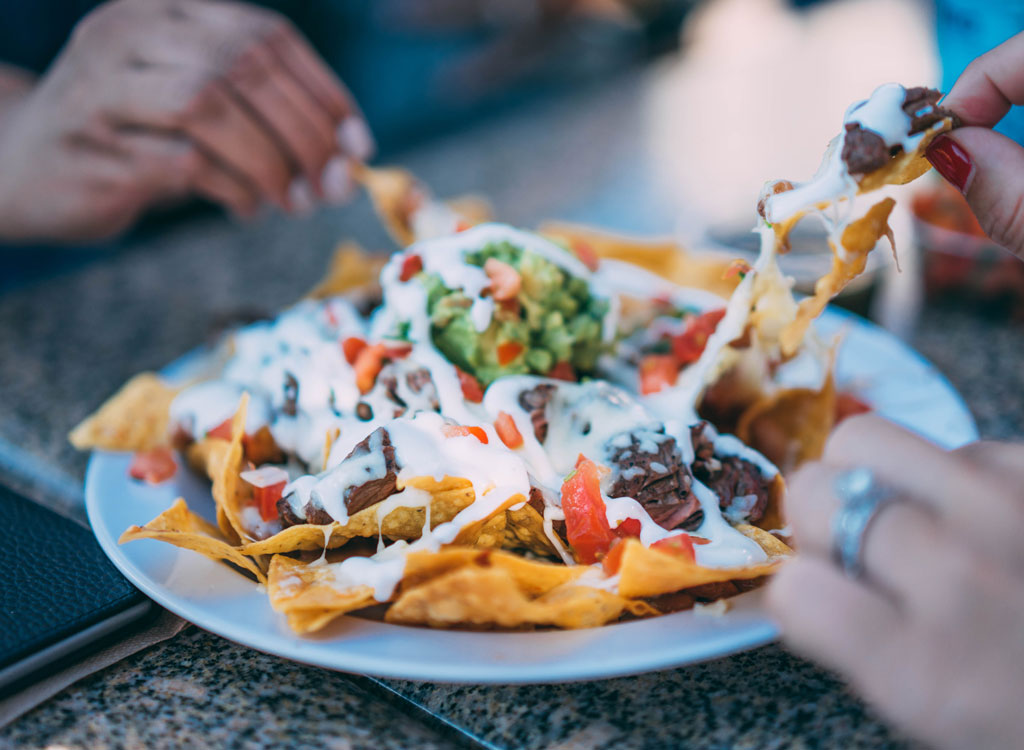
Nachos first came on the scene in 1943, in a small city called Piedras Negras, Mexico, that's just south of a U.S. Military base in Fort Duncan, Texas. Time reports that a group of military wives had come down to Piedras Negras for a shopping trip, and found that all of the restaurants were closed. When they headed to one spot in town called Victory Club, the maître d'—named Ignacio "Nacho" Anaya—took pity on the women. He offered to make them something out of the ingredients he had on hand in his closed kitchen. When he saw how much the women enjoyed the dish, he added it to the menu under his own nickname. Now, we can all be grateful for Nacho.
Margherita Pizza
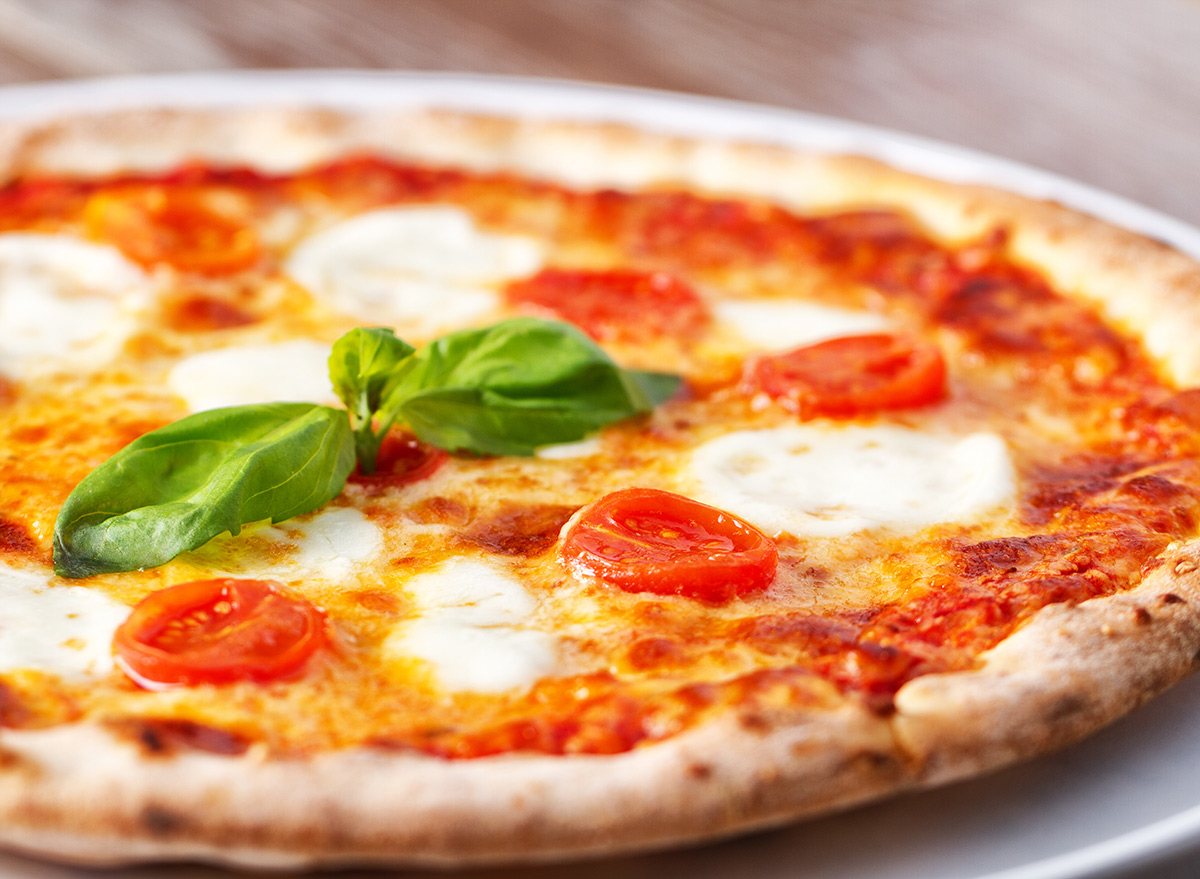
Margherita pizza is a staple of Italian and Italian-American cuisine, but have you ever stopped to wonder where the name comes from? It turns out, as Italy magazine reports, "Margherita" refers to the former Queen of Italy, Margherita of Savoy. In 1889, on a visit to Naples, she and her husband, King Umberto I, visited Pizzeria Brandi. The restaurant's chef, Raffaele Esposito, and his wife honored their regal guests by topping a pizza with three ingredients that each represented a different color of the Italian flag: red sauce, white mozzarella cheese, and fresh green basil.
German Chocolate Cake
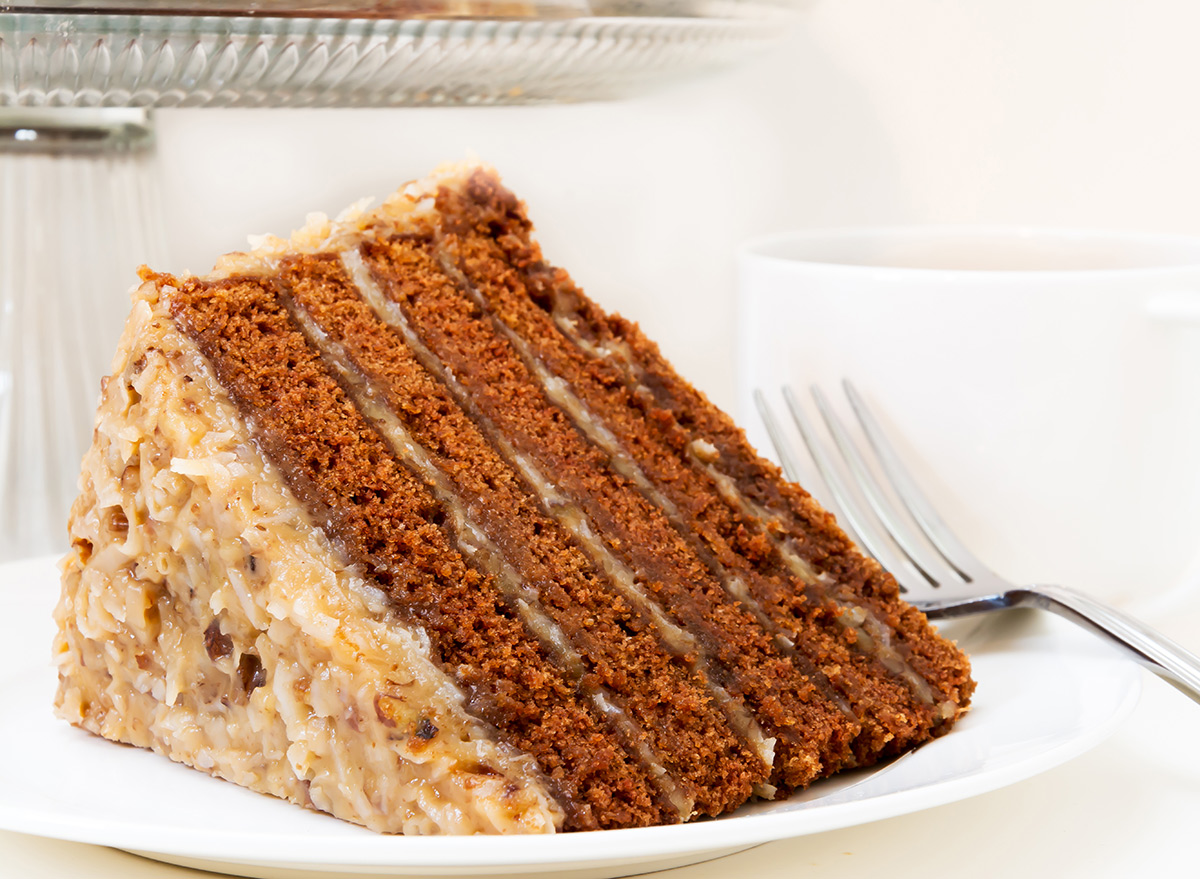
Most people assume that German Chocolate Cake is named after the country in its name, but it's actually named after its creator, Sam German, who was either of English or American descent. According to NPR, German created "German's Chocolate" in 1852 for the Baker's chocolate company, which named the product after him.
Fast forward to more than a century later when a Texas homemaker created a recipe for a cake using chocolate, coconut, and pecans, and sent it into a Dallas newspaper in 1957. Soon, the cake skyrocketed in popularity, and somewhere along the way, the "German's" in "German's Chocolate Cake" lost its apostrophe-s, which is why the origin of this dessert is oft confused.
Oysters Rockefeller
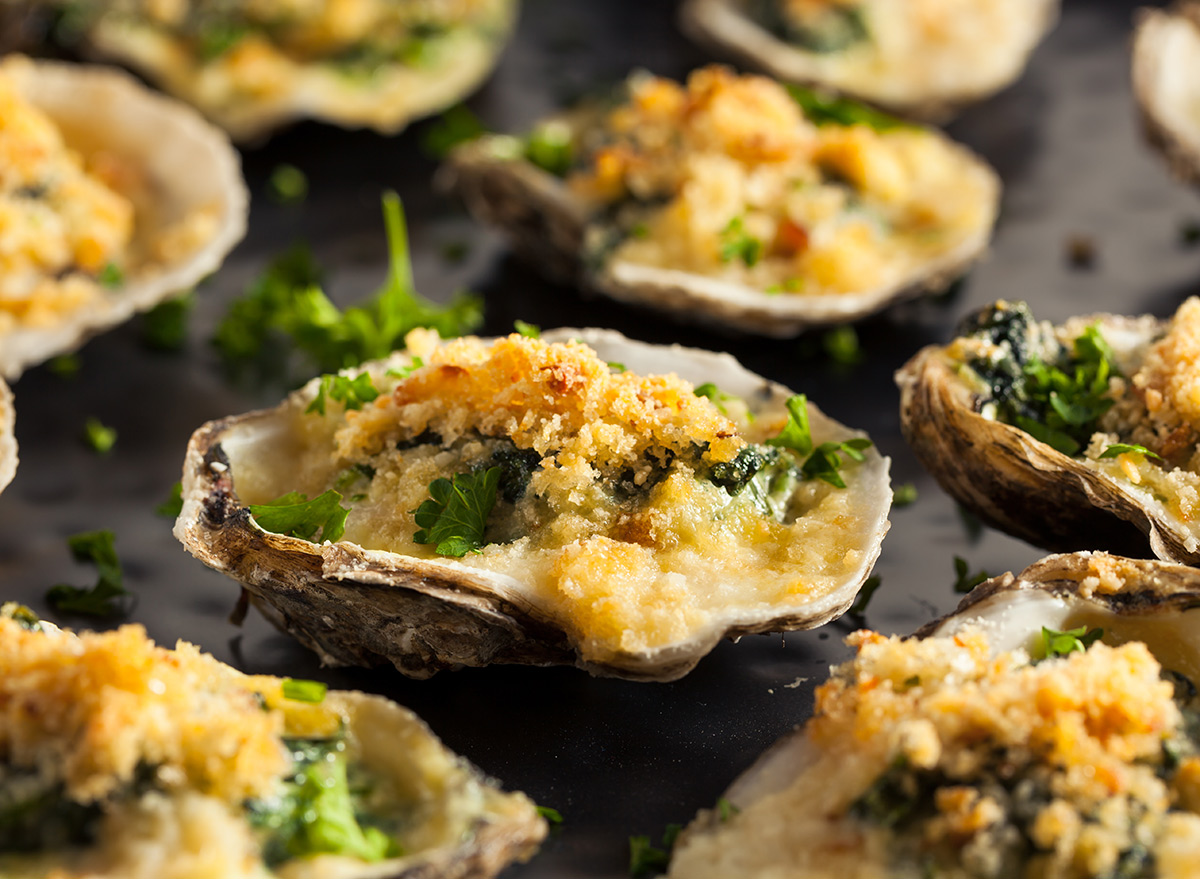
Oysters Rockefeller—which is baked oysters on the half shell, topped with greens and drenched in butter—emerged in 1899 at a New Orleans restaurant called Antoine's. According to Epicurious, due to its rich flavors, the restaurant named the dish after the wealthiest man of the era, John D. Rockefeller.
Welsh Rarebit (or Rabbit)
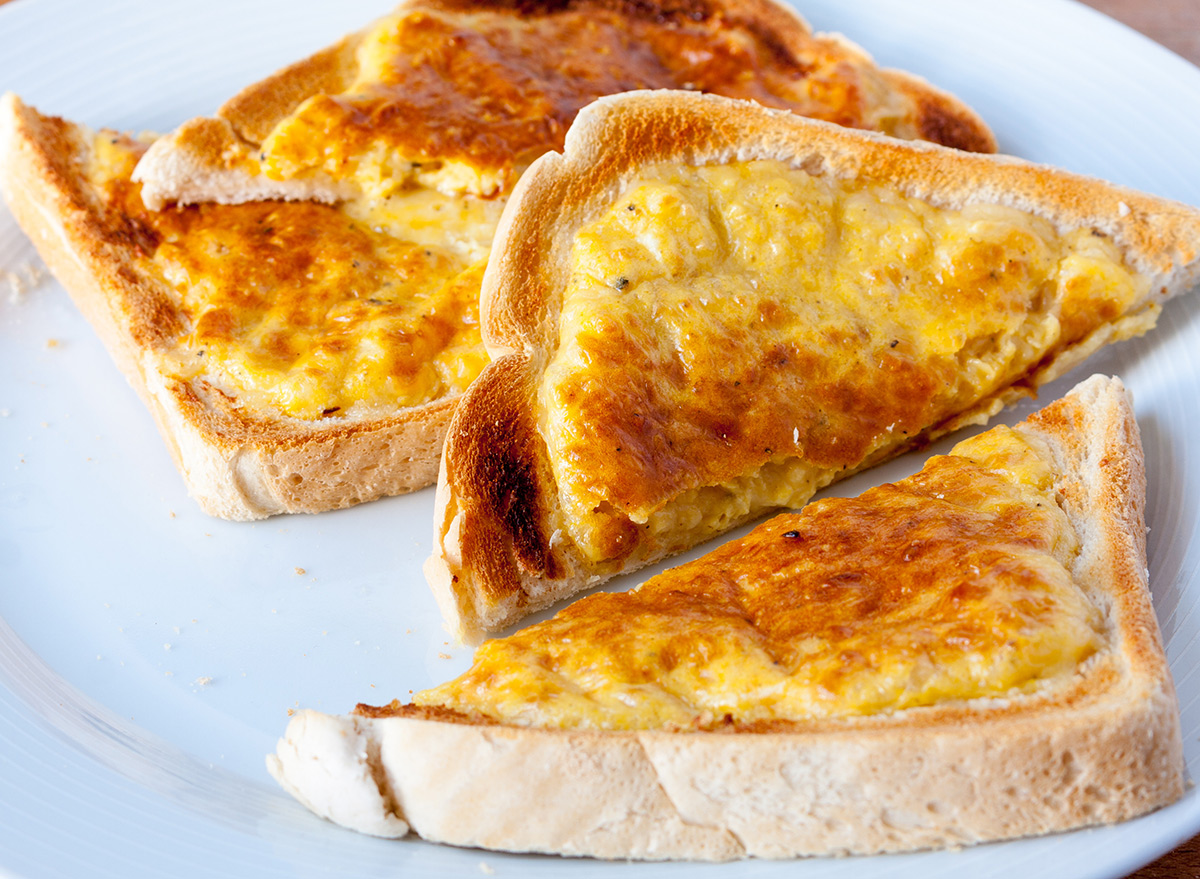
This dish is a total misnomer: It contains no rabbit, and might not even be from Wales. It turns out, calling something "Welsh" in 17th and 18th century Britain was actually a way of saying that it was of poor quality—a rather snide jab at the country of Wales itself. So by this theory, a "Welsh Rabbit"—as this dish was initially called, according to the Oxford Dictionary—would be a rabbit dish where the ingredients were so poor, there was no meat in it at all. It's dry British humor at its finest.
And for those of you who've never had the pleasure, Welsh Rarebit, is actually a fondue-like cheese sauce over toasted bread. And if you ask us, it's pretty decadent.
General Tso's Chicken
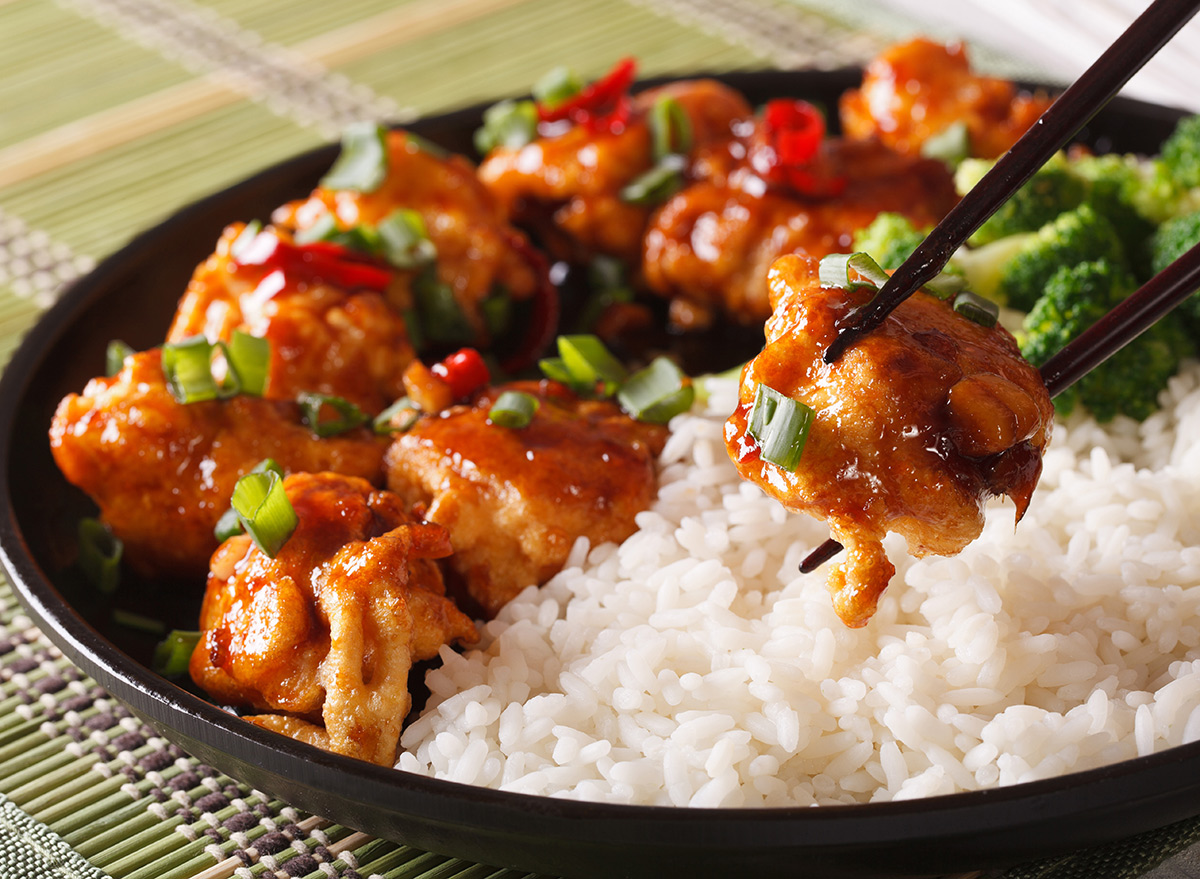
Like most of the "Chinese" dishes on this list, you'd be hard-pressed to find General Tso's chicken on restaurant menus in China. The dish—which is battered and fried chicken with broccoli in a sweet, chili-laced sauce—was created in the 1950s in Taiwan by a man from China's Hunan Province named Peng Chang-kuei. He named it after Tso Tsung-tang, a major Hunanese military figure of the 19th century.
According to NPR, there's always been talk that the general had enjoyed eating the meal regularly; but in reality, his death predated the recipe by 75 years. "General Tso's chicken did not preexist in Hunanese cuisine," Peng told NPR, noting his original version didn't include sugar. "But originally the flavors of the dish were typically Hunanese—heavy, sour, hot, and salty."
Cobb Salad
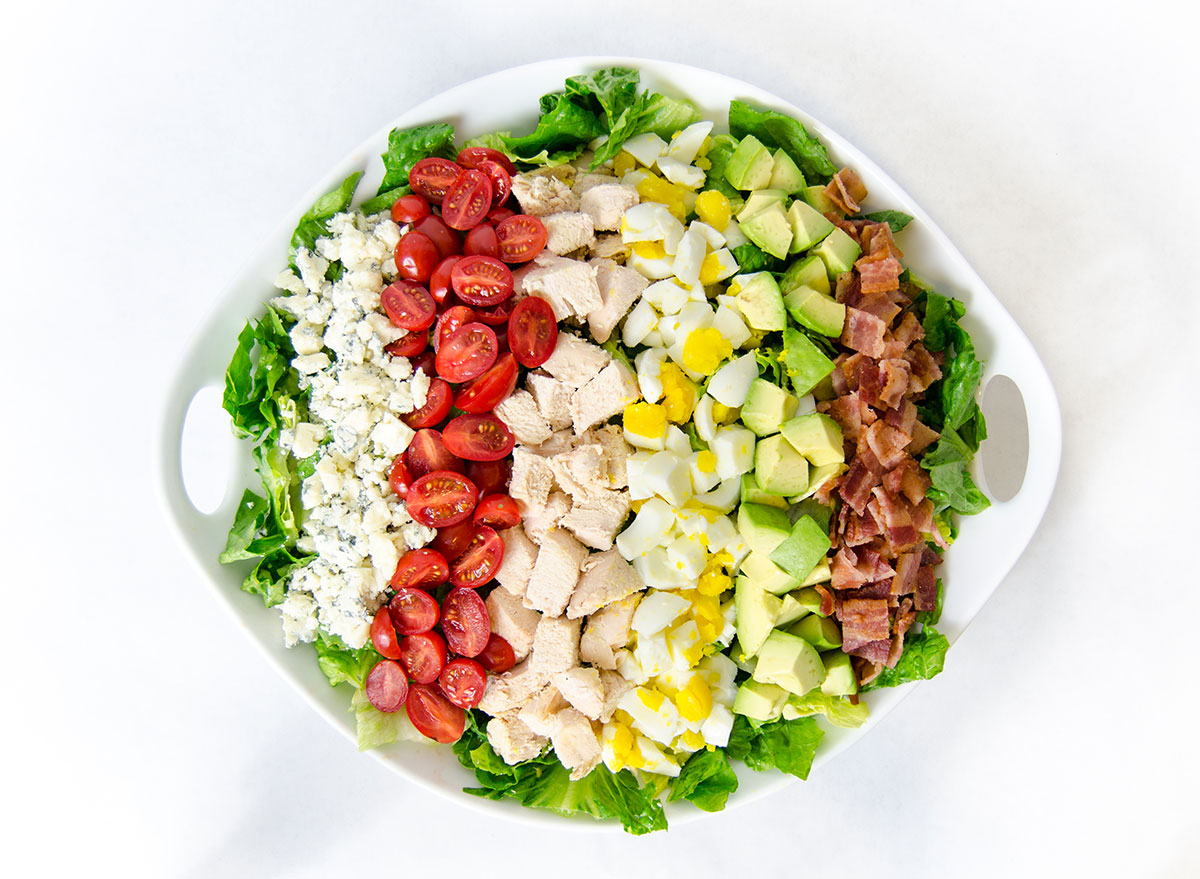
This iconic chopped salad was borne out of practicality. Robert "Bob" Cobb, the owner of the famed Brown Derby restaurant in Beverly Hills, created the salad while in the kitchen late one night. He threw in everything he had on hand, from avocado and chopped roasted chicken to hard-boiled eggs and bacon.
Cobb shared the dish with his friend, Sid Grauman of the even-more legendary Grauman's Chinese Theatre, and the next day, Grauman came back asking for a "Cobb Salad." In 1937, the everything-but-the-kitchen-sink dish was officially added to the restaurant's menu, and stars like Spencer Tracy, Clark Gable, and Lucille Ball were gobbling it up.
Earl Grey Tea
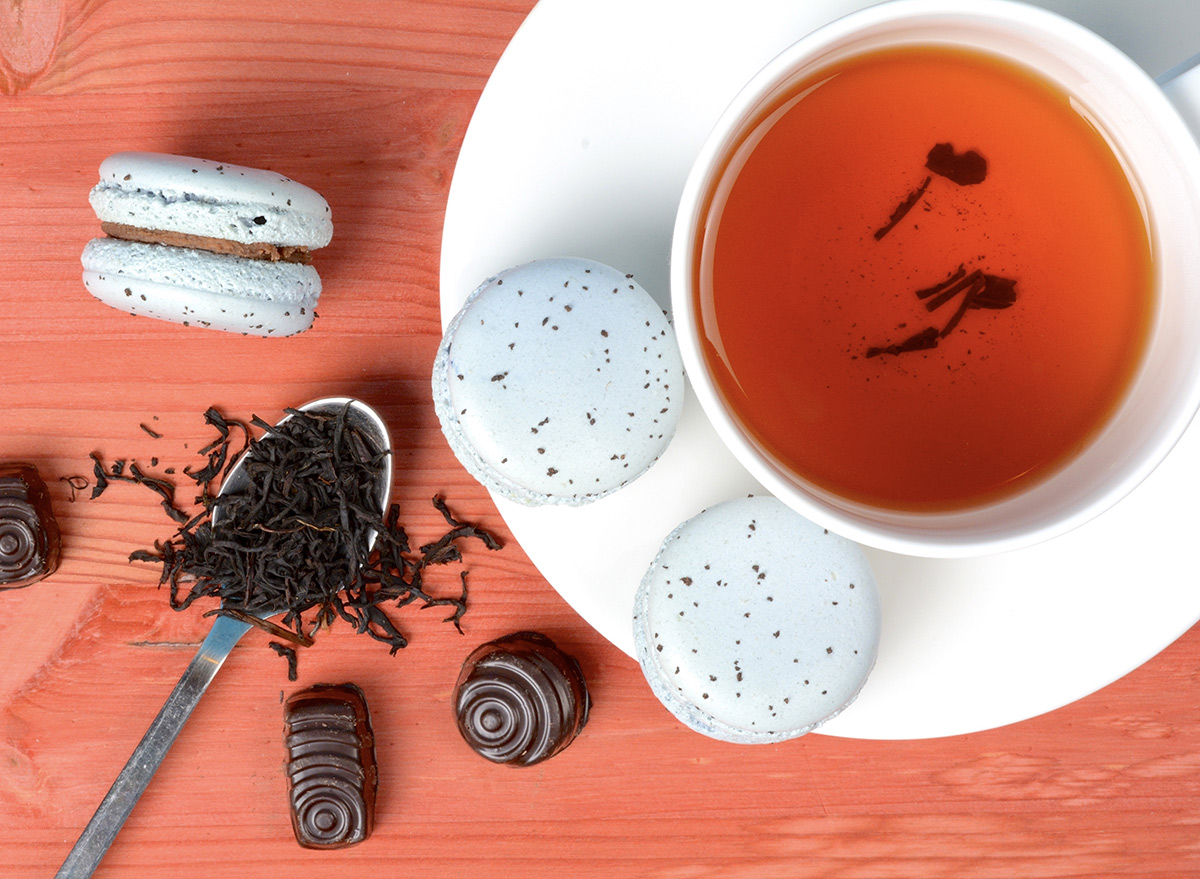
You've probably assumed that Earl Grey tea is named after Earl Grey, but who in the world is that anyway? Charles Grey was the second Earl Grey and the British Prime Minister in the 1830s. According to tea expert Breda Desplat, rumor has it that Charles Grey received this particular blend of tea—which is flavored with bergamot oil—as a diplomatic gift from Chinese representatives. And thus, the name was born.
Graham Crackers

Sylvester Graham, the inventor of the graham cracker, was a 19th-century evangelical minister with a bit of an unorthodox approach to combating sin. Appalled by the mass production of bread that came with the industrial revolution, he set out to create a whole wheat flour that people could bake with at home, forcing them to return to simpler times. He called the concoction"Graham flour," and the bland, heavy biscuits made with it "Graham Crackers." We can only imagine that he would have been horrified to learn his creation is now one of the main ingredients in a hedonistic dessert like s'mores.
Beef Wellington
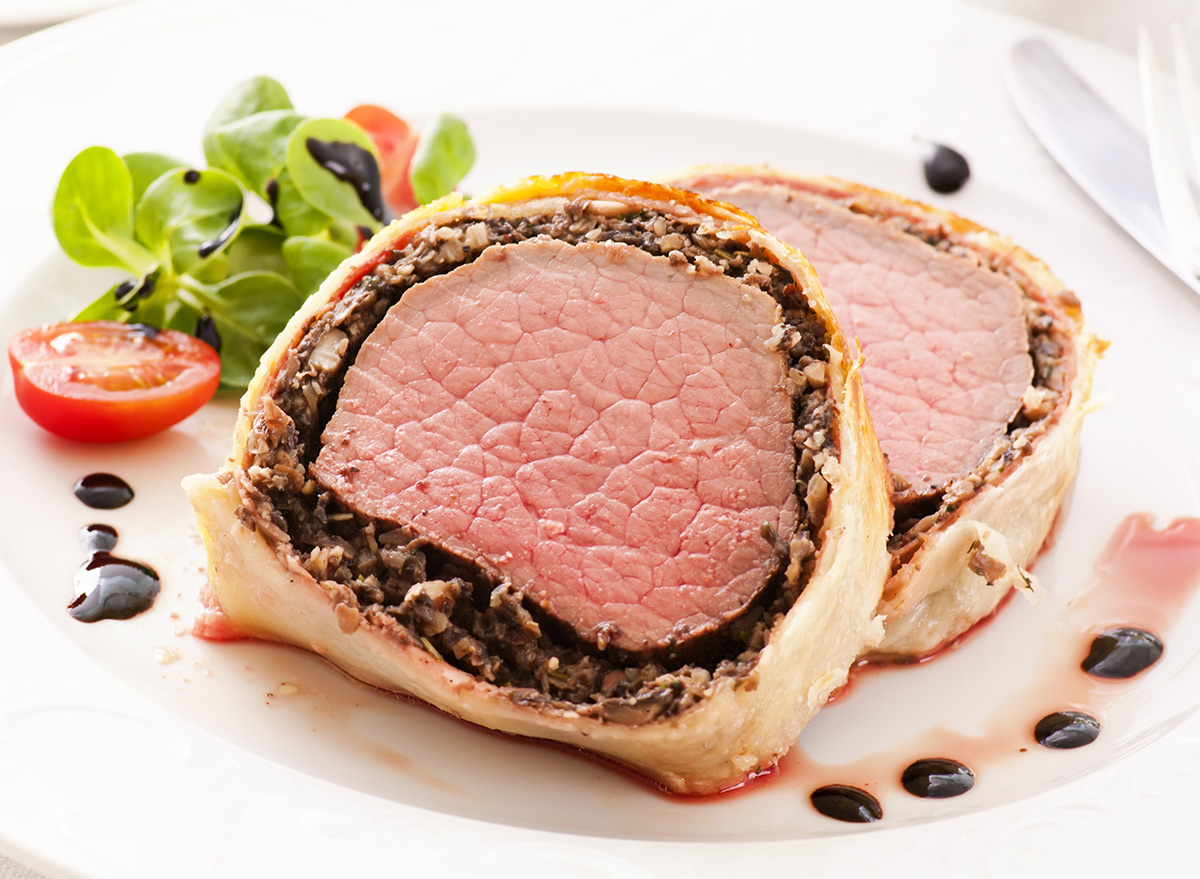
Today, Gordon Ramsay is the king of Beef Wellington—a fillet of steak coated in pate and finely chopped mushroom duxelles, then baked within a puff pastry. And according to the acclaimed chef's website, there are two possible origins for the name.
Some say that the dish is named for Arthur Wellesley, the Duke of Wellington, after his historic leadership in the Battle of Waterloo in 1815. Others insist that it was created for a reception held in Wellington, New Zealand. But no matter its roots, Beef Wellington is certainly something to add to your foodie bucket list.
Doughnuts

The etymology of this one is right there in the name, but it's still easy to miss. The pastry is literally dough that's shaped like a "nut," as in the sort of nut you'd pair with a bolt. According to Smithsonian Magazine, Dutch settlers are responsible for bringing olykoeks—aka "oily cakes"—to what was New Amsterdam—aka New York City—in the 1800s. But it was an American by the name of Hanson Gregory who first punched a hole in the middle of the pastry, creating "the first doughnut hole ever seen by mortal eyes."
Gumbo
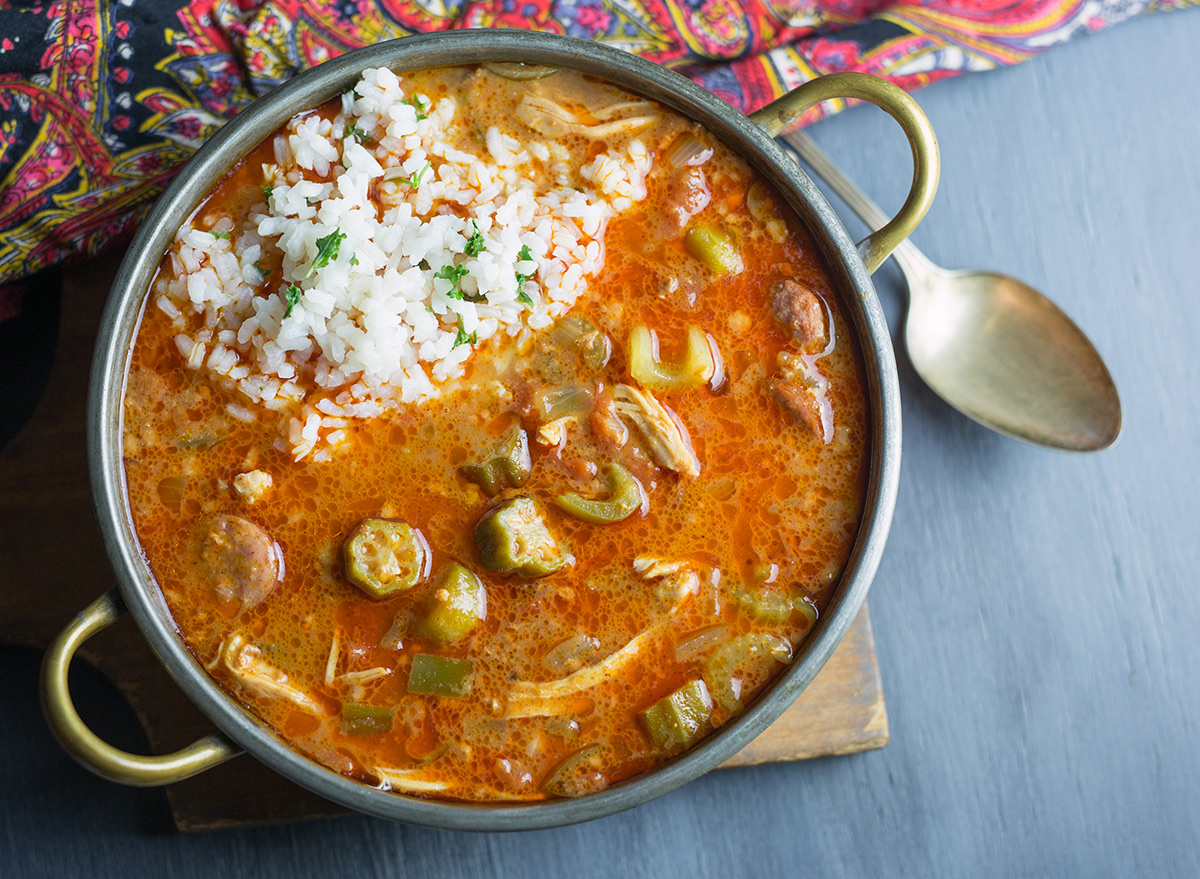
This Louisiana staple is packed with meat or seafood, onions, peppers, and celery. Original recipes seemingly also featured okra, which we know because the name of the dish comes from the West African word for the vegetable ("ki ngombo" or "quingombo"), according to the Southern Foodways Alliance.
The dish dates back to at least the 1800s, but it gained widespread popularity in the 1970s, thanks to Louisiana Senator Allen Ellender. The politician enjoyed Cajun cooking so much that after his death in 1972, the United States Senate cafeteria added gumbo to its menu in his honor, according to Spoon University.
Buffalo Wings
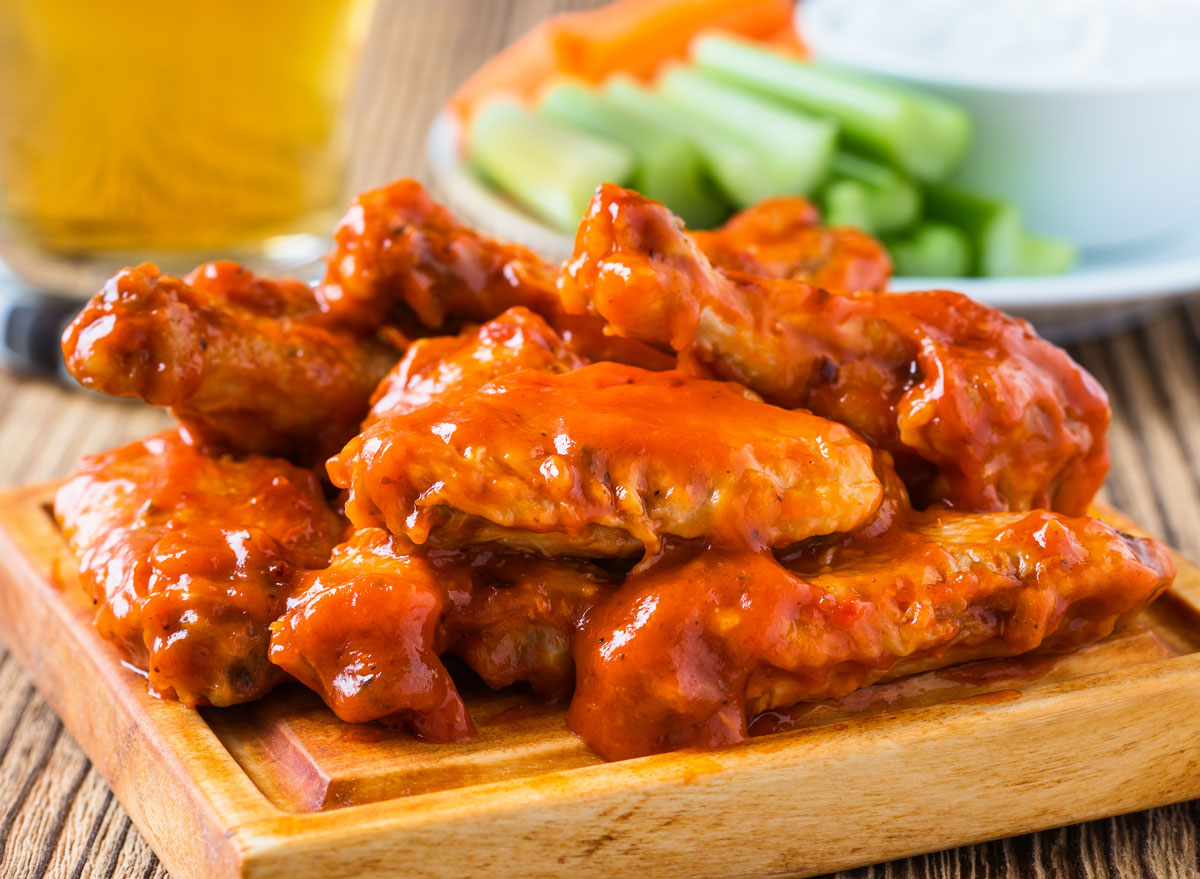
Why are they called Buffalo wings if they're made of chicken, you ask? It's because of their place of origin. These wings first appeared at Anchor Bar in Buffalo, New York, in 1964. Time reports that they were created when the restaurant received a shipment of chicken wings instead of the other parts they had ordered.
To up their appeal, owner Teresa Bellissimo decided to coat the wings in a sauce of her own creation. She served them with blue cheese and celery stalks because that's what she had readily available. The Bellissimos' happy accident would forever change sports bars and game-day parties.
Bellini

Harry's Bar in Venice, Italy, is responsible for more than carpaccio; it's also behind another of your favorite brunch cocktails. The owner of Harry's, Giuseppe Cipriani, created the beverage in 1948.
According to Town and Country, similar to the name of carpaccio, the Bellini's title also has artistic roots. Cipriani named it after 15th-century painter Giovanni Bellini because the color of the drink reminded him of the shade of a saint's toga in one of his favorite Bellini paintings.
Bananas Foster
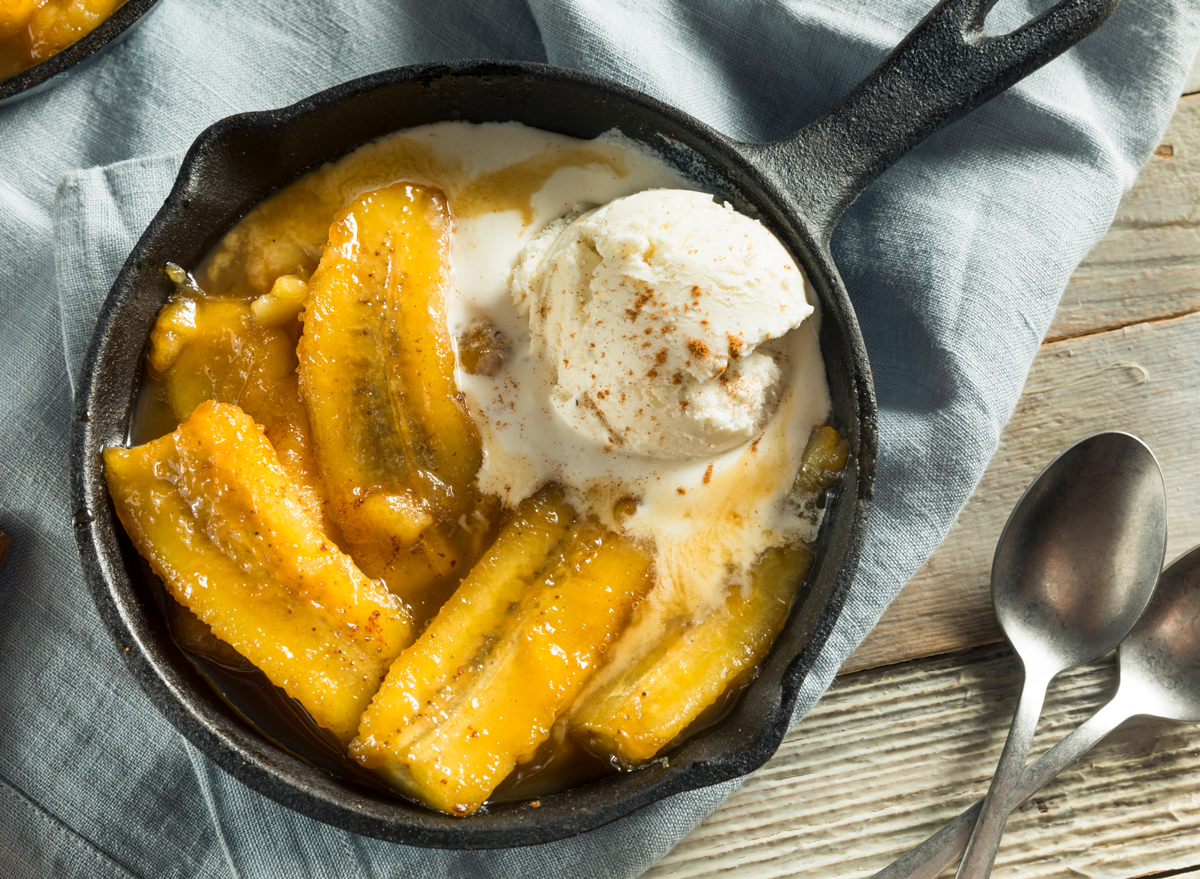
Bananas Foster is another famous Louisiana creation, but this one emerged out of Brennan's, a restaurant in the French Quarter, in the 1950s. At the time, New Orleans was a major port for banana shipments coming from South and Central America. The owner of Brennan's, Owen Brennan, challenged his chef, Paul Blange, to come up with a new use for the plentiful fruit, according to NewOrleans.com.
Blange's creation was a hit, and Brennan named the caramelized, flambéed dessert after his friend, Richard Foster, the chairman of the New Orleans Crime Commission. If you're a purist and a banana lover who's headed to the Big Easy, you can still get Bananas Foster at Brennan's today.
Hamburger
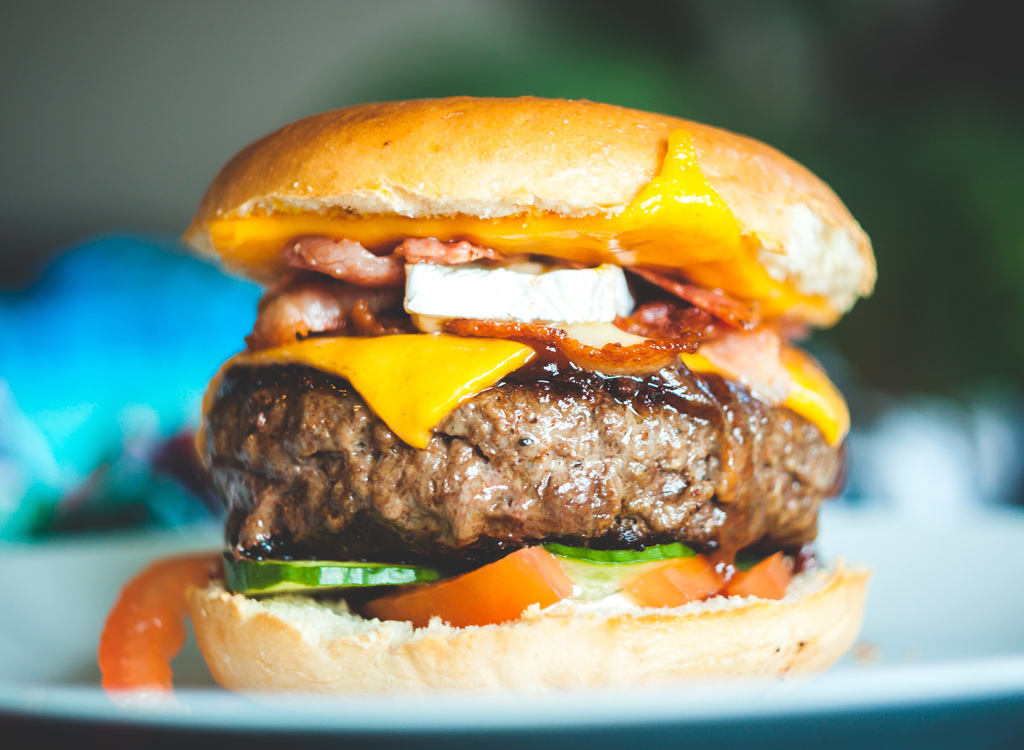
Just like there's no buffalo in Buffalo wings, there is also no ham in hamburger. These ground beef patties got their name from their place of origin… sort of. In the 1880s, German emigrants brought the dish with them to the U.S. from Hamburg, where many ships to America set sail. In 1904, the dish was featured at the World's Fair in St. Louis in its current sandwich form.
Soon, they appeared on menus across America, where they were described as "Hamburg-style American fillet" to entice German customers. Eventually, the name got shortened to plain old "hamburgers." Thanks, Germany!
Grits
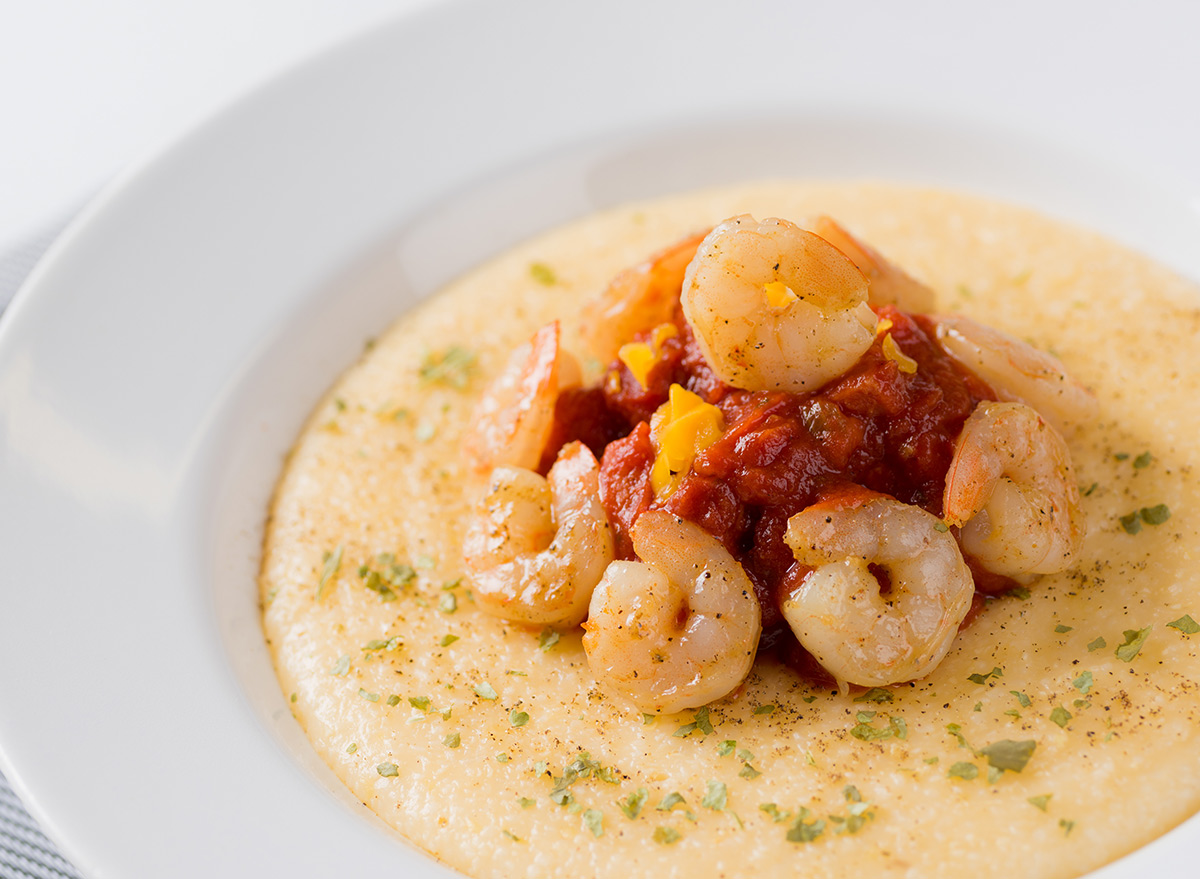
"Grits" may be synonymous with Southern cuisine, but the word for the dish actually comes from the Middle English word "gyrt," which refers to the outer layer of any grain. Grits were initially made by Native Americans, who ground up corn kernels to make a porridge. According to Southern Living, early settlers imitated the process and re-named them "grits."
Arnold Palmer
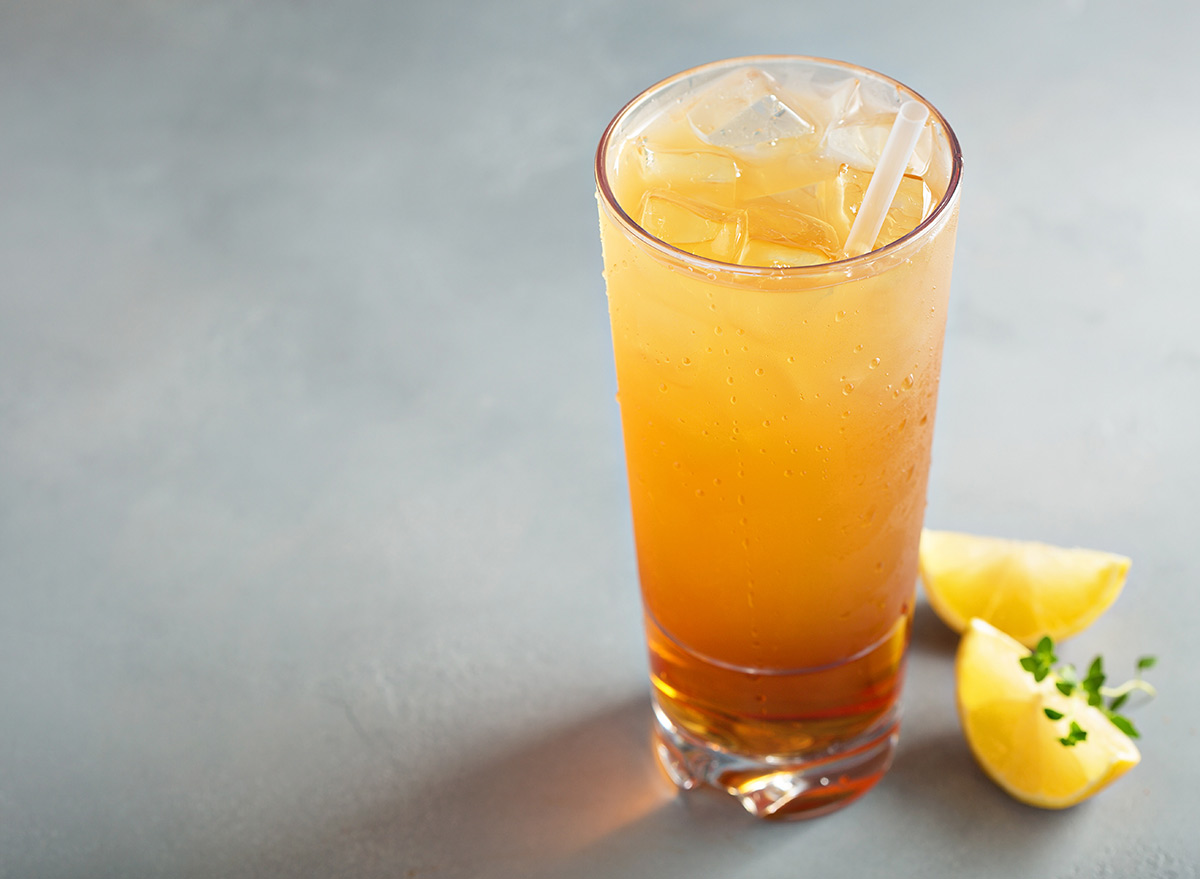
Yes, this blend of two classic summertime beverages is indeed named after famed golfer Arnold Palmer. And the story of how it came to be is quite simple: Palmer had been making himself a combination of lemonade and iced tea for years.
One day, in the late 1960s, he sat down in a restaurant in Palm Springs and asked the waitress for a half-lemonade, half-iced tea. In a very When Harry Met Sally moment, a woman nearby overheard the order and said, "I'll have that Arnold Palmer drink!" The beverage caught on, and soon enough, it became an American classic.



